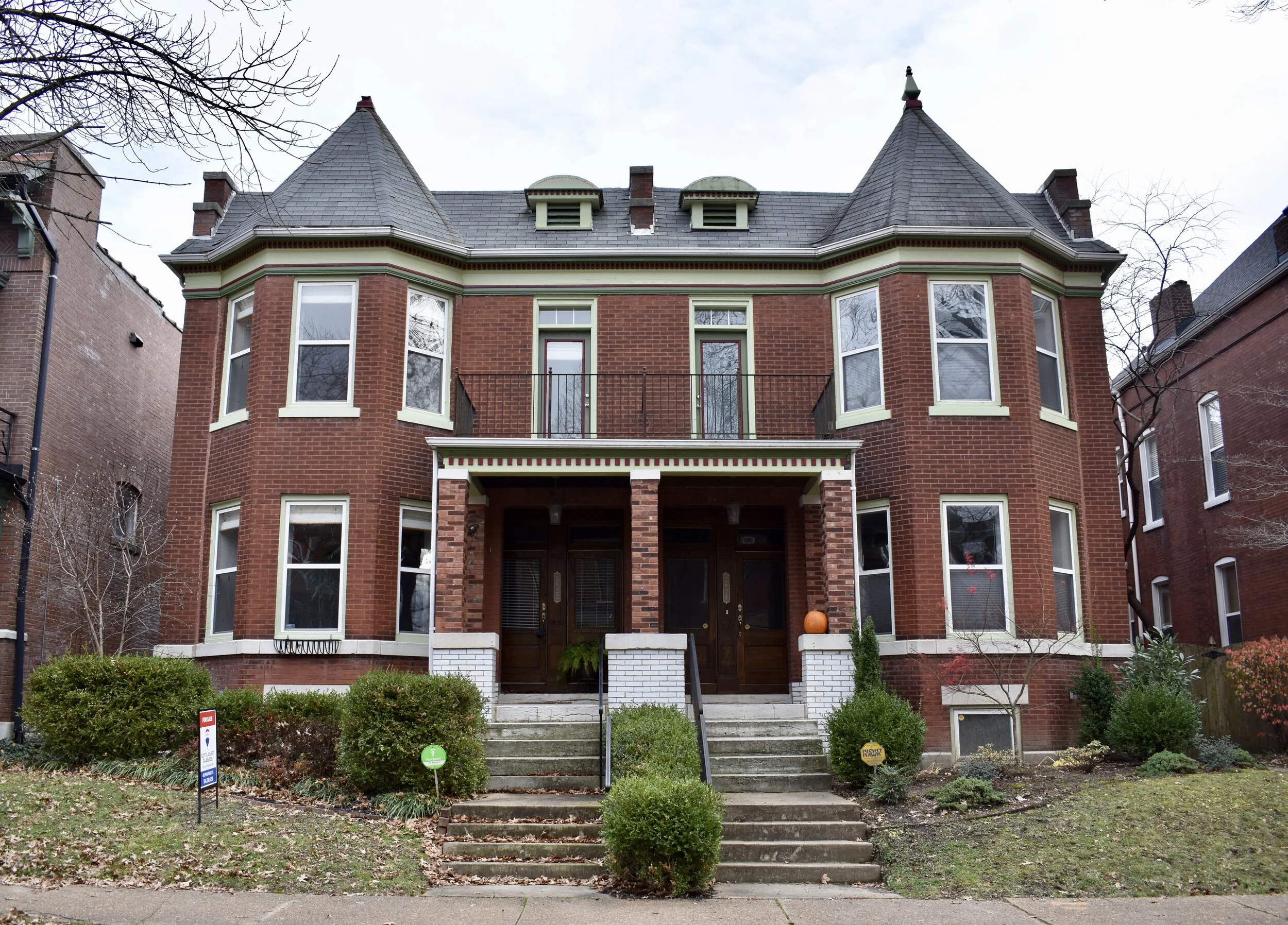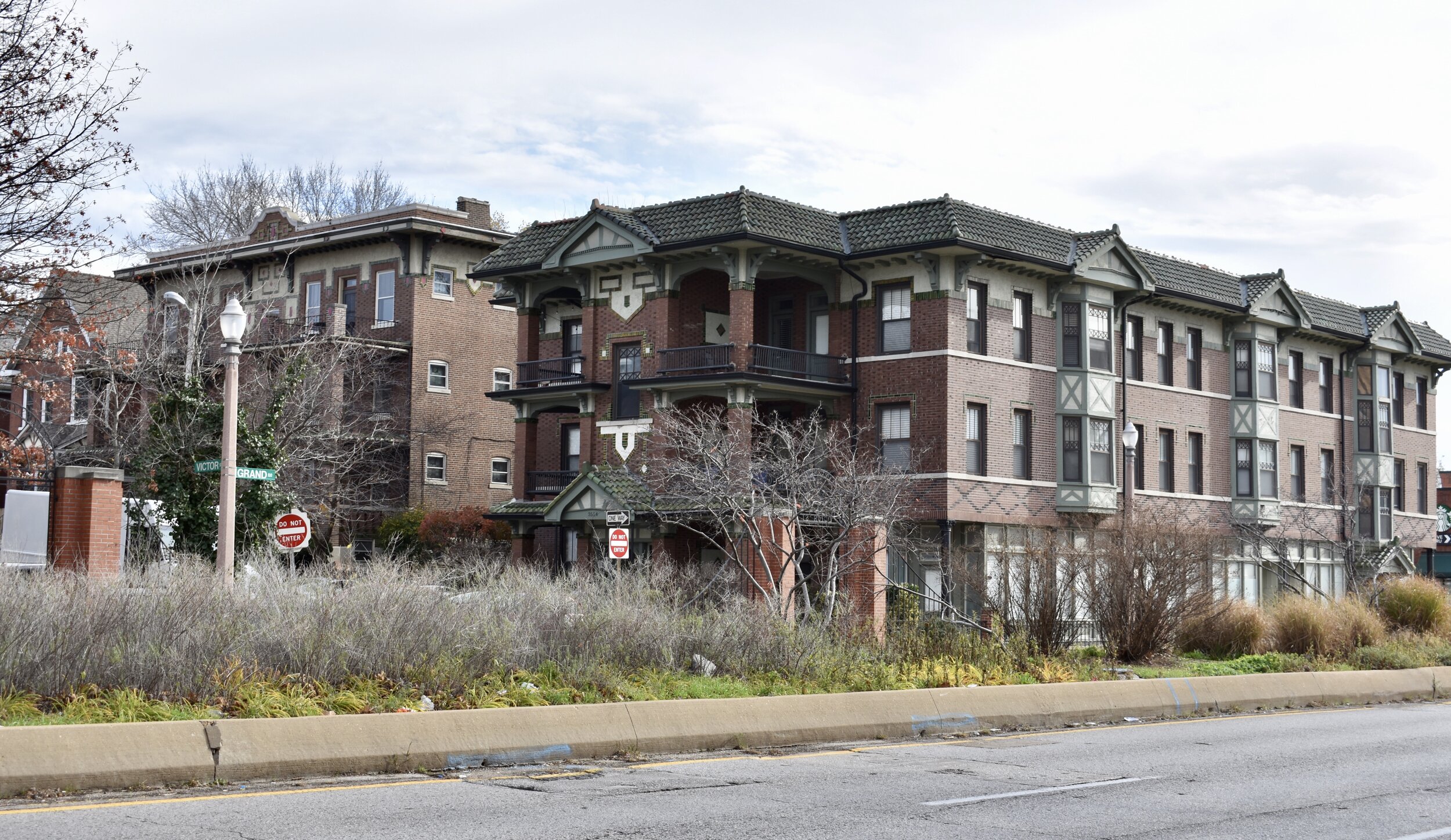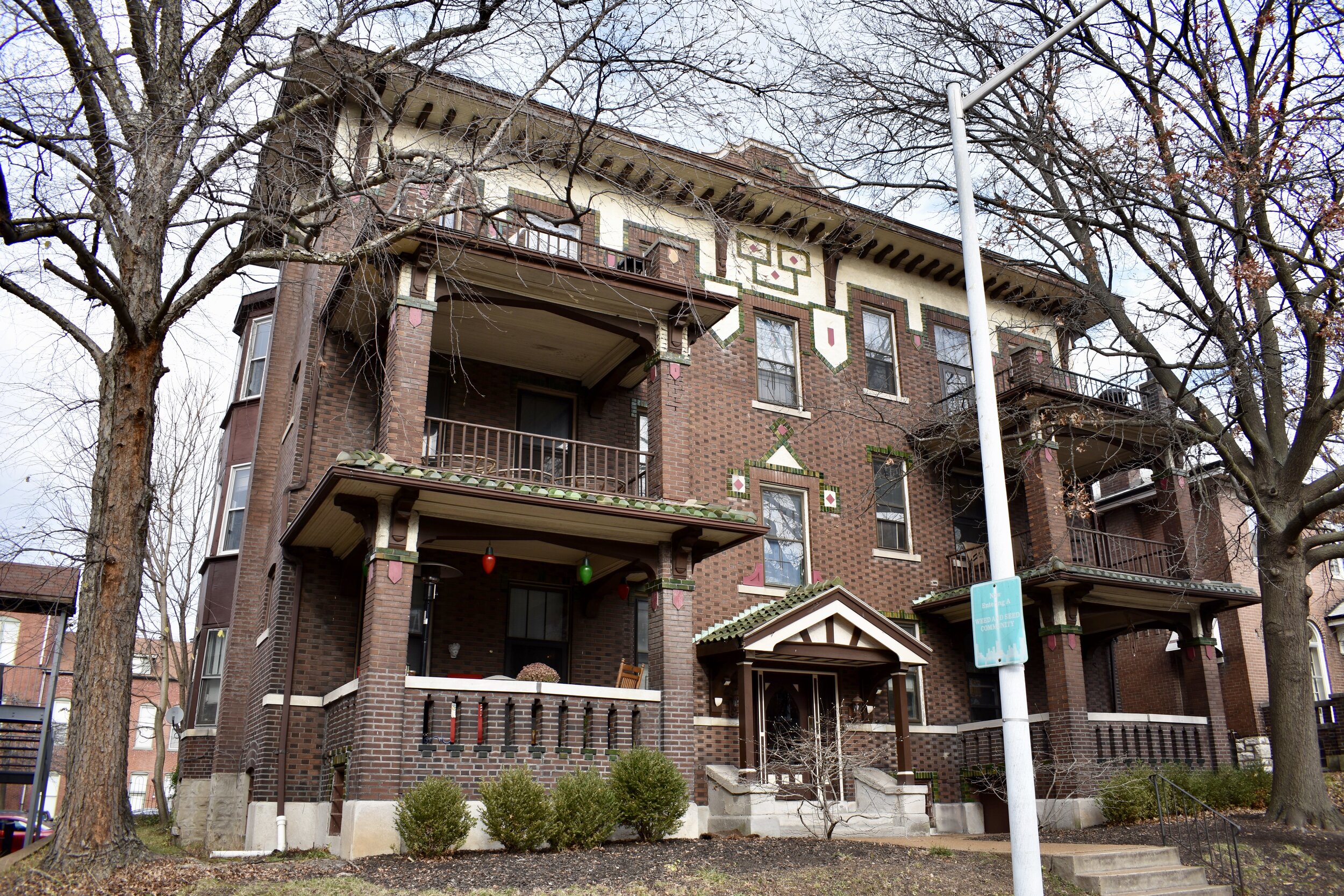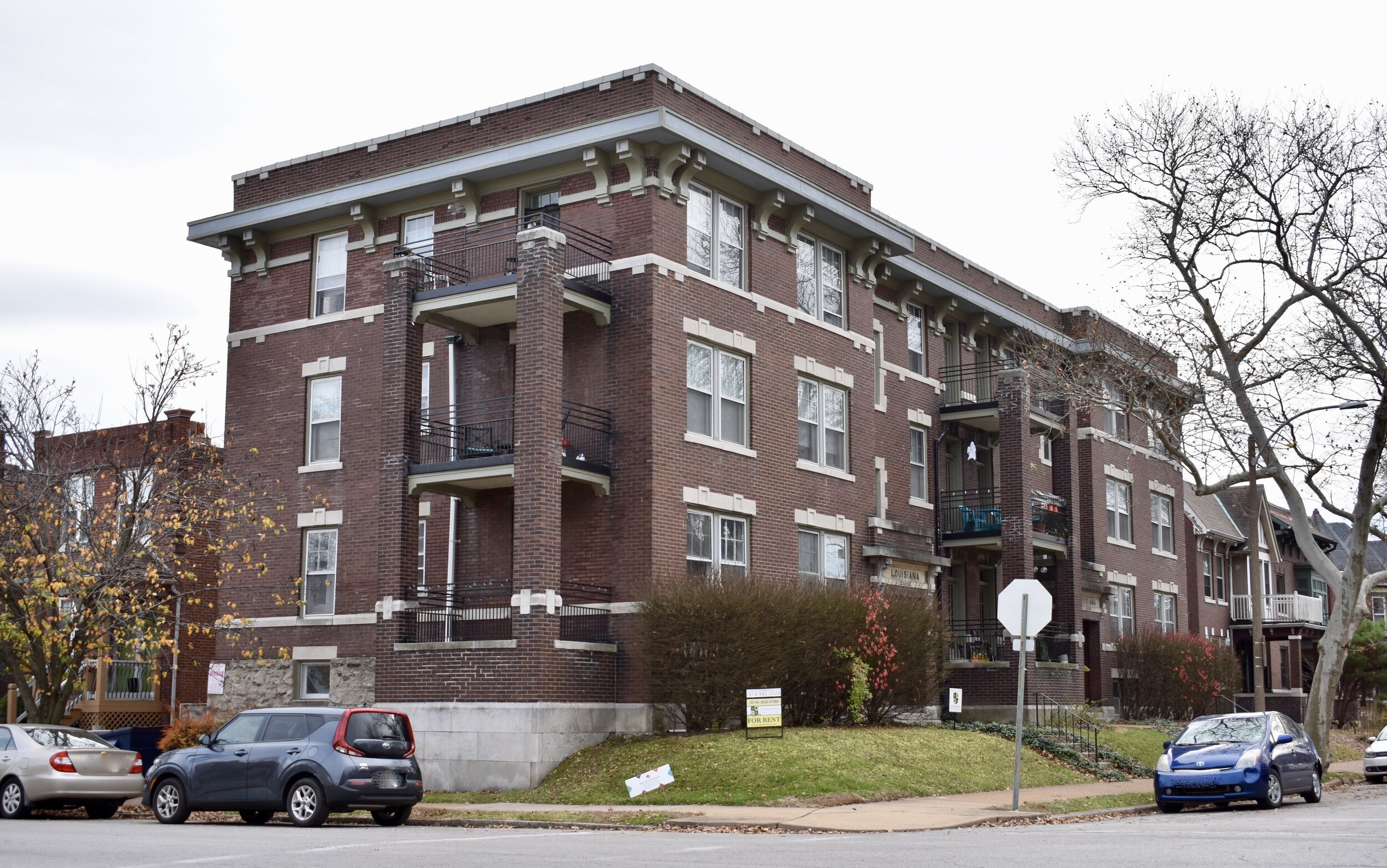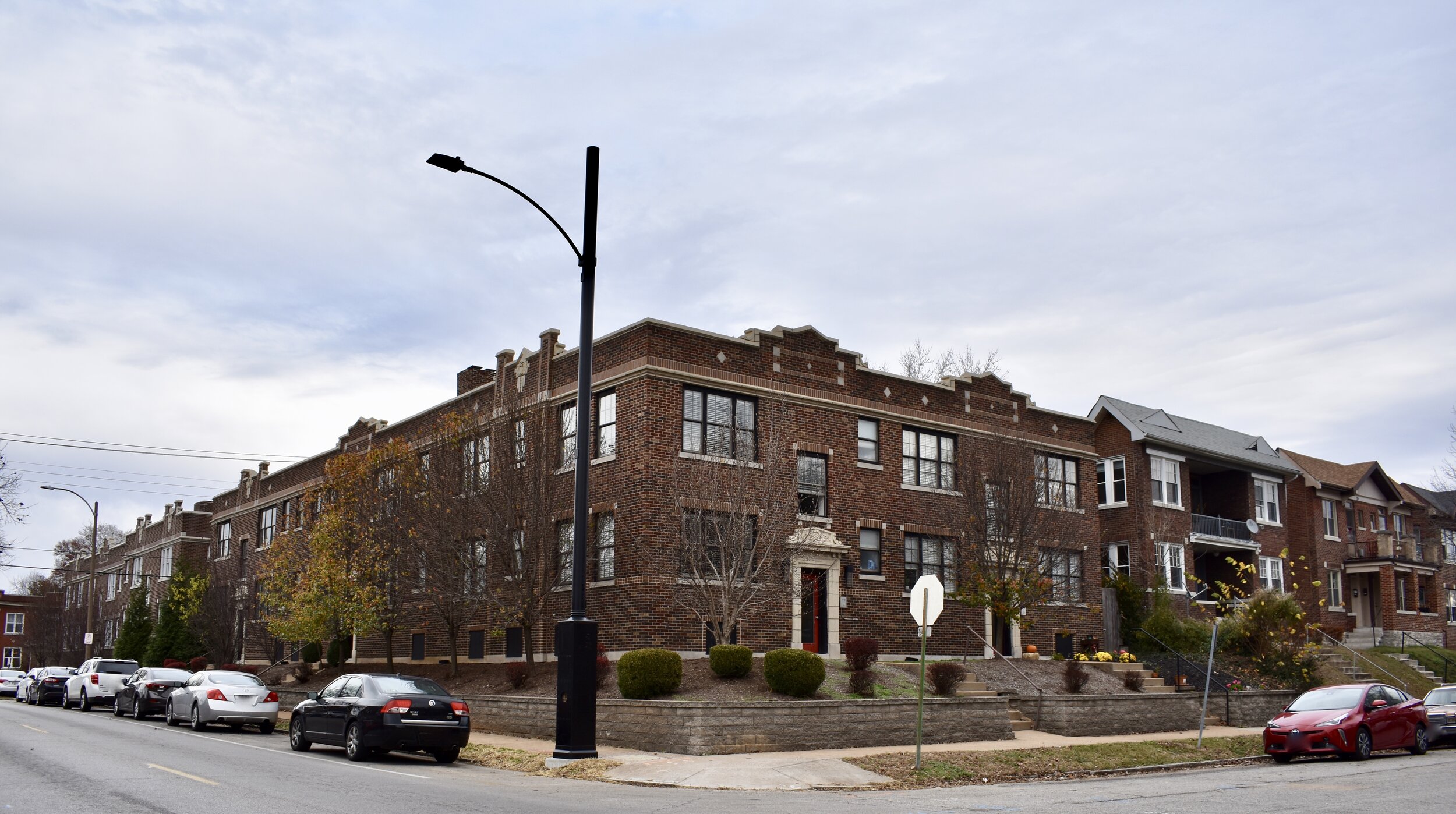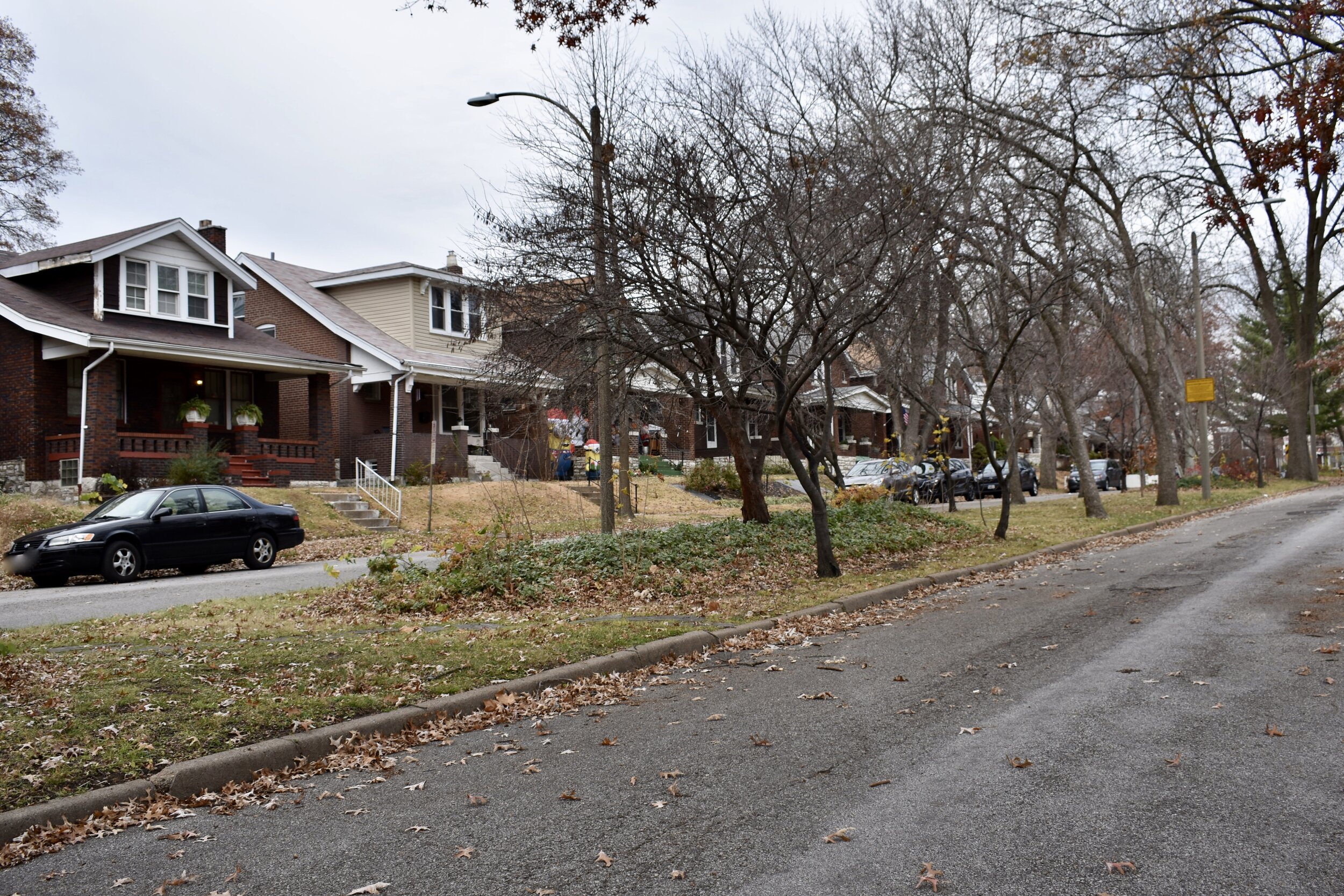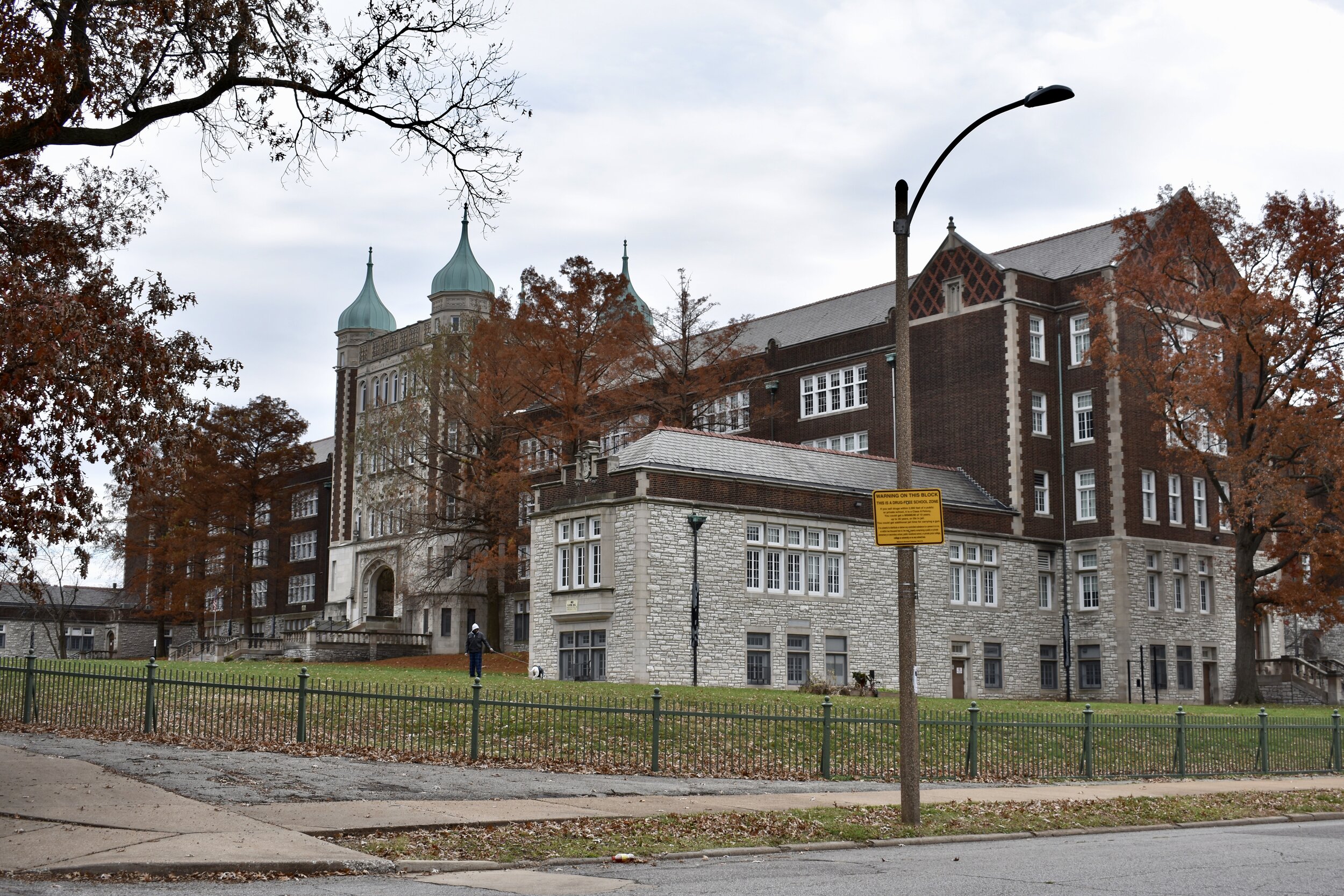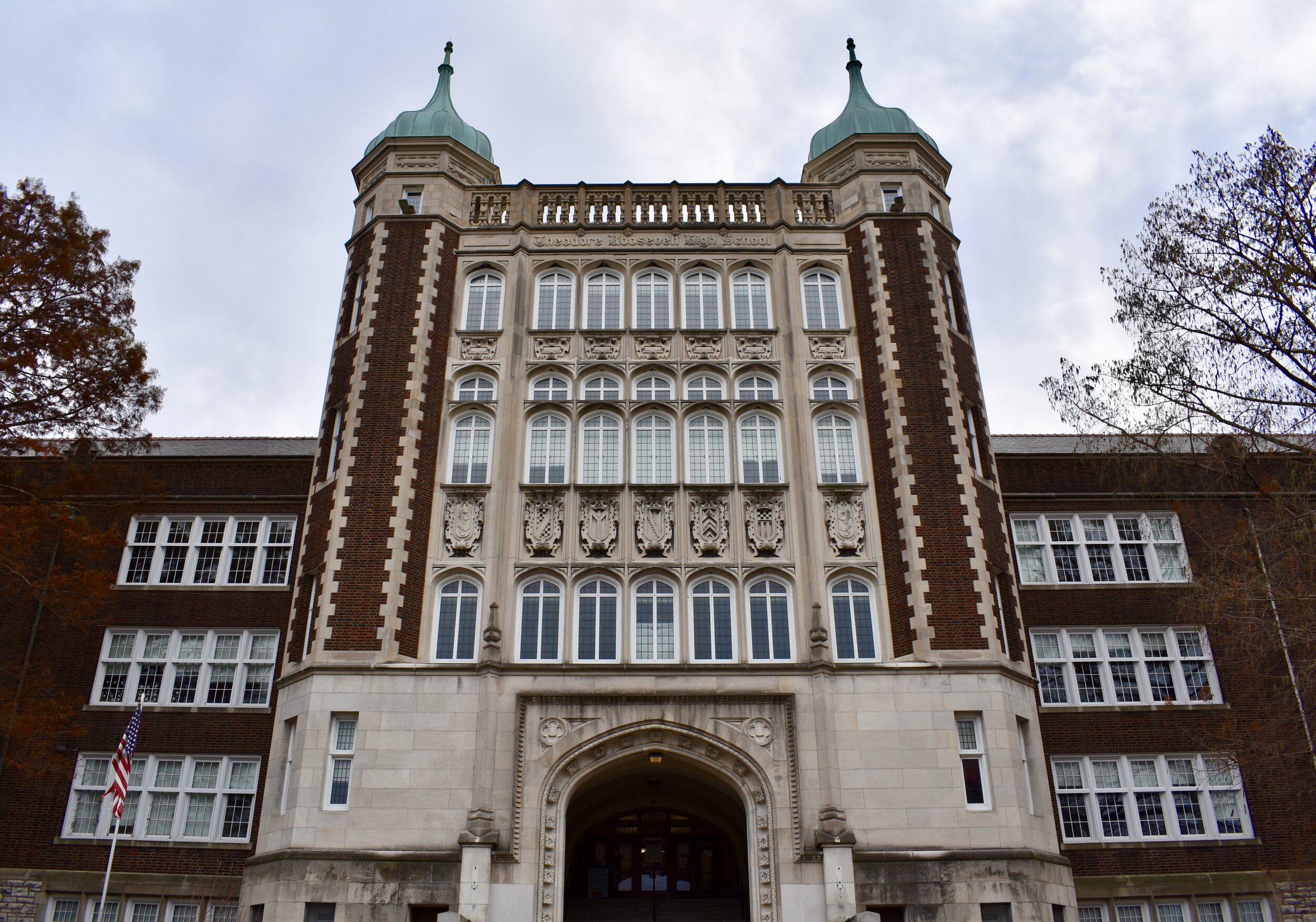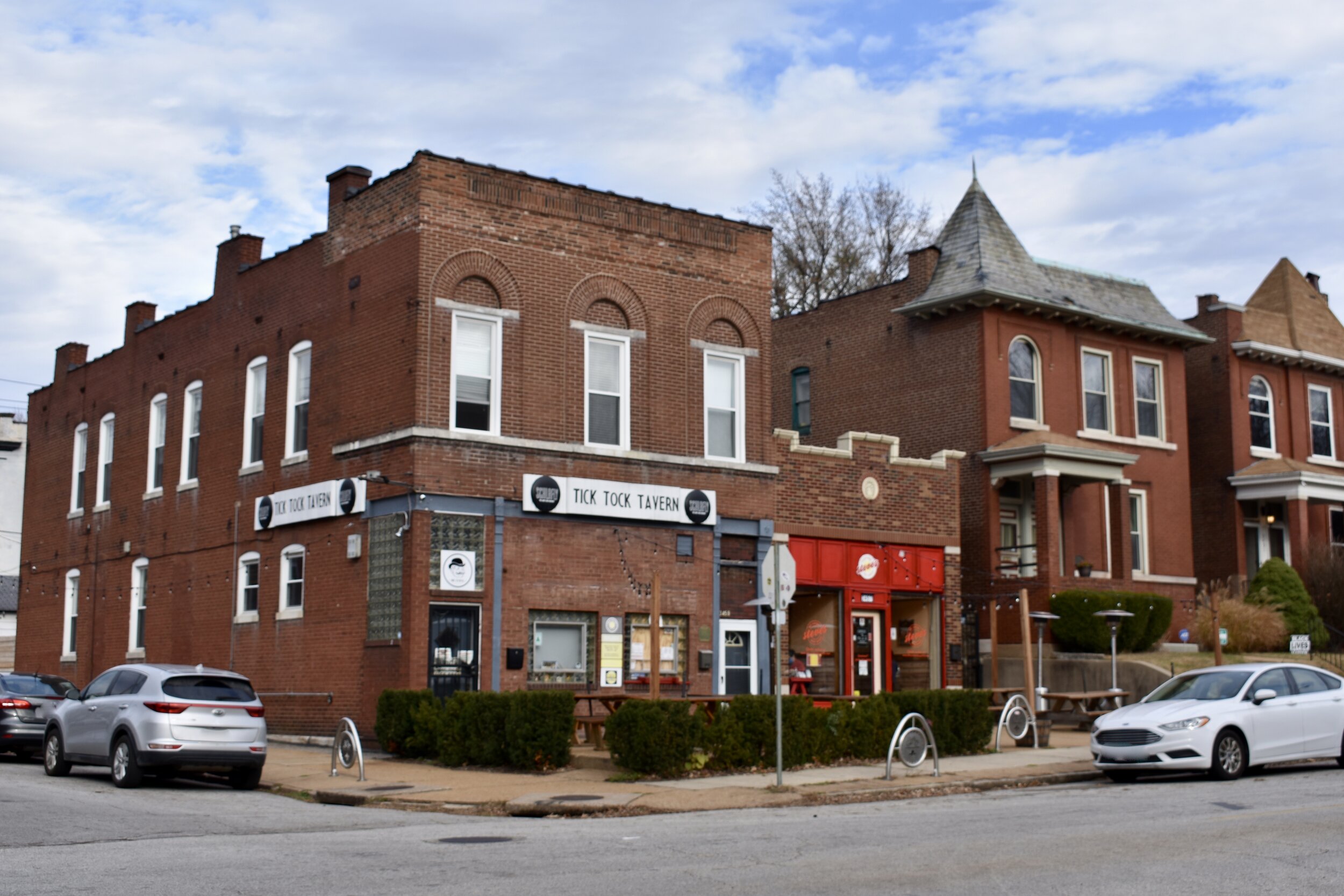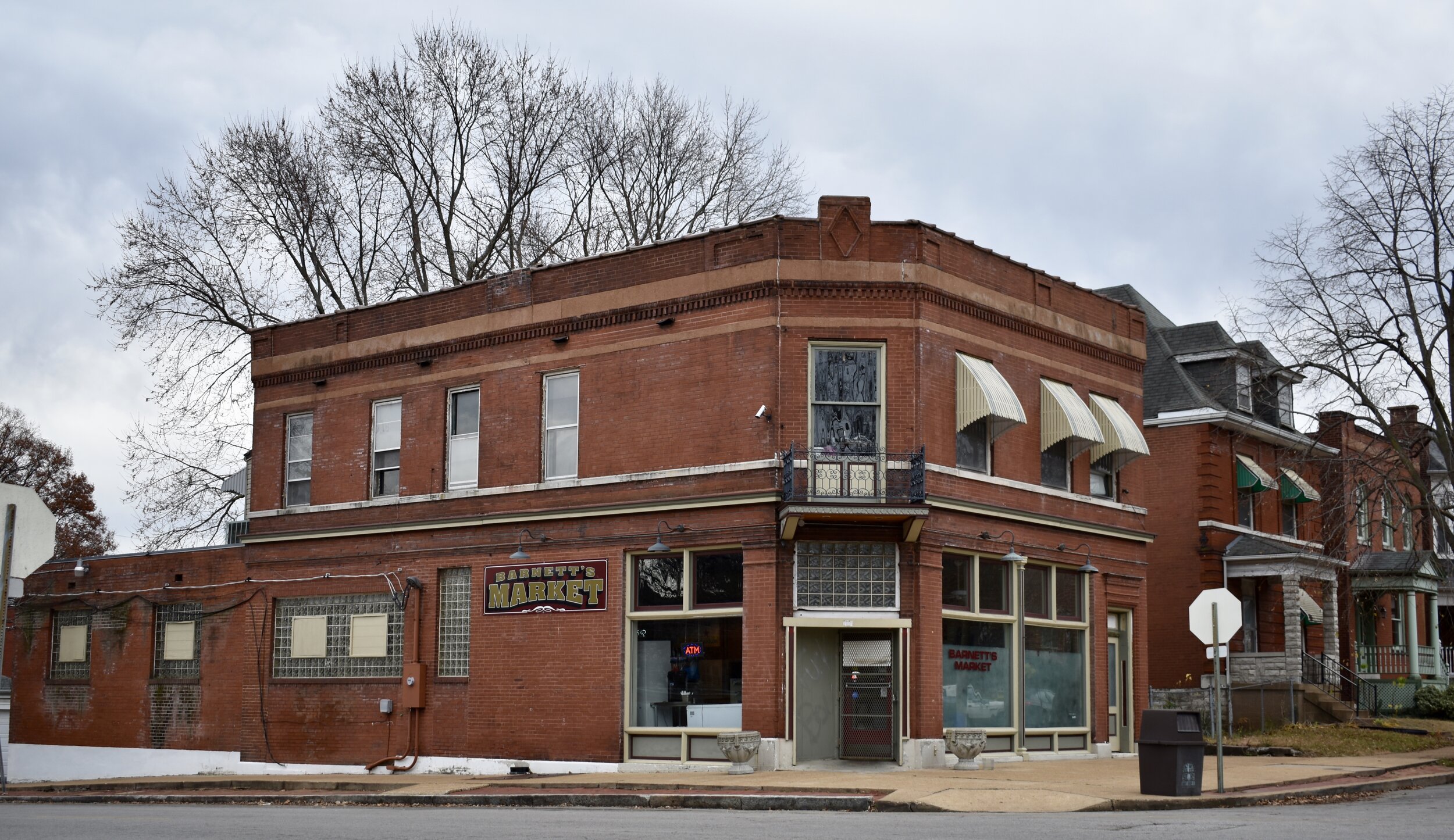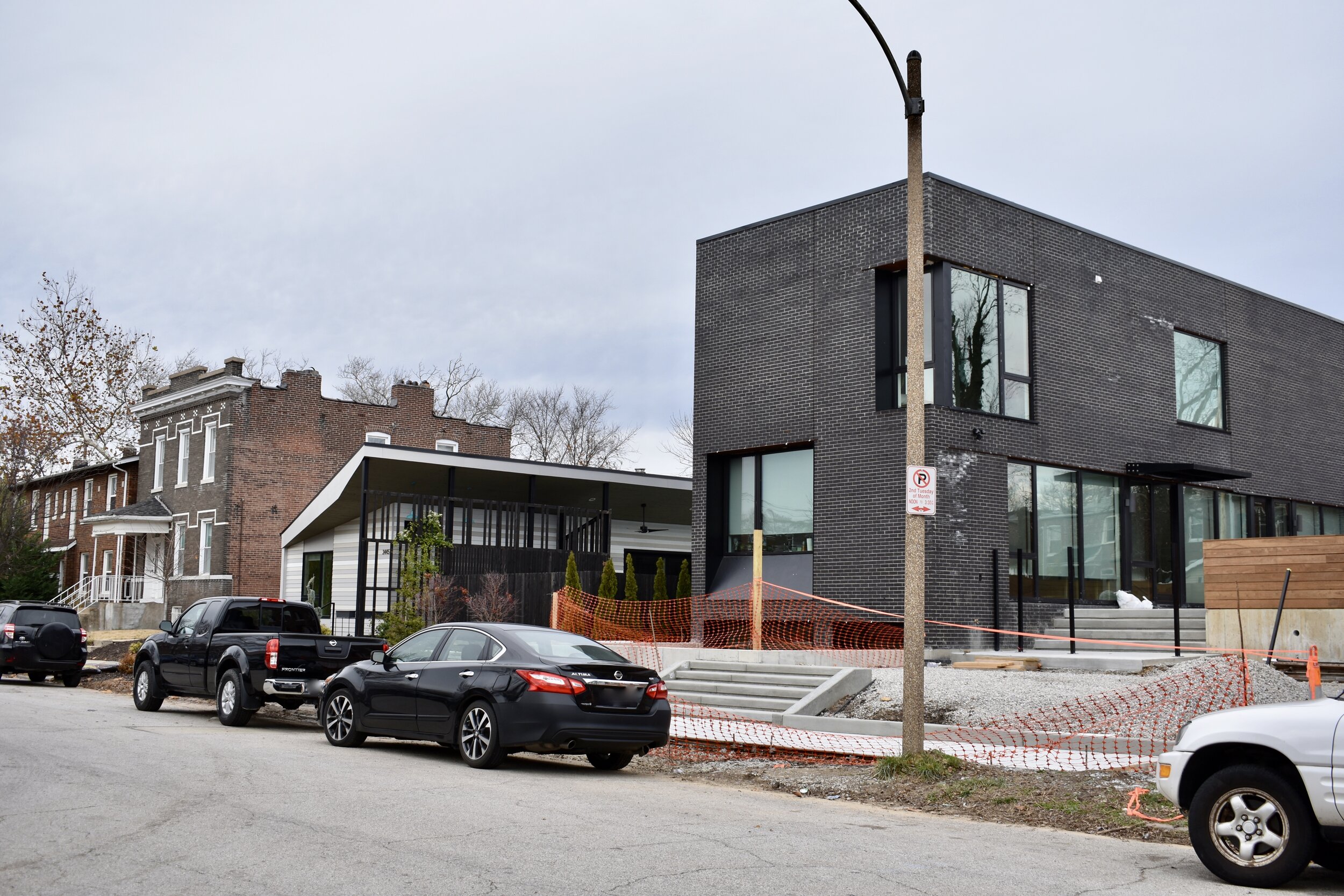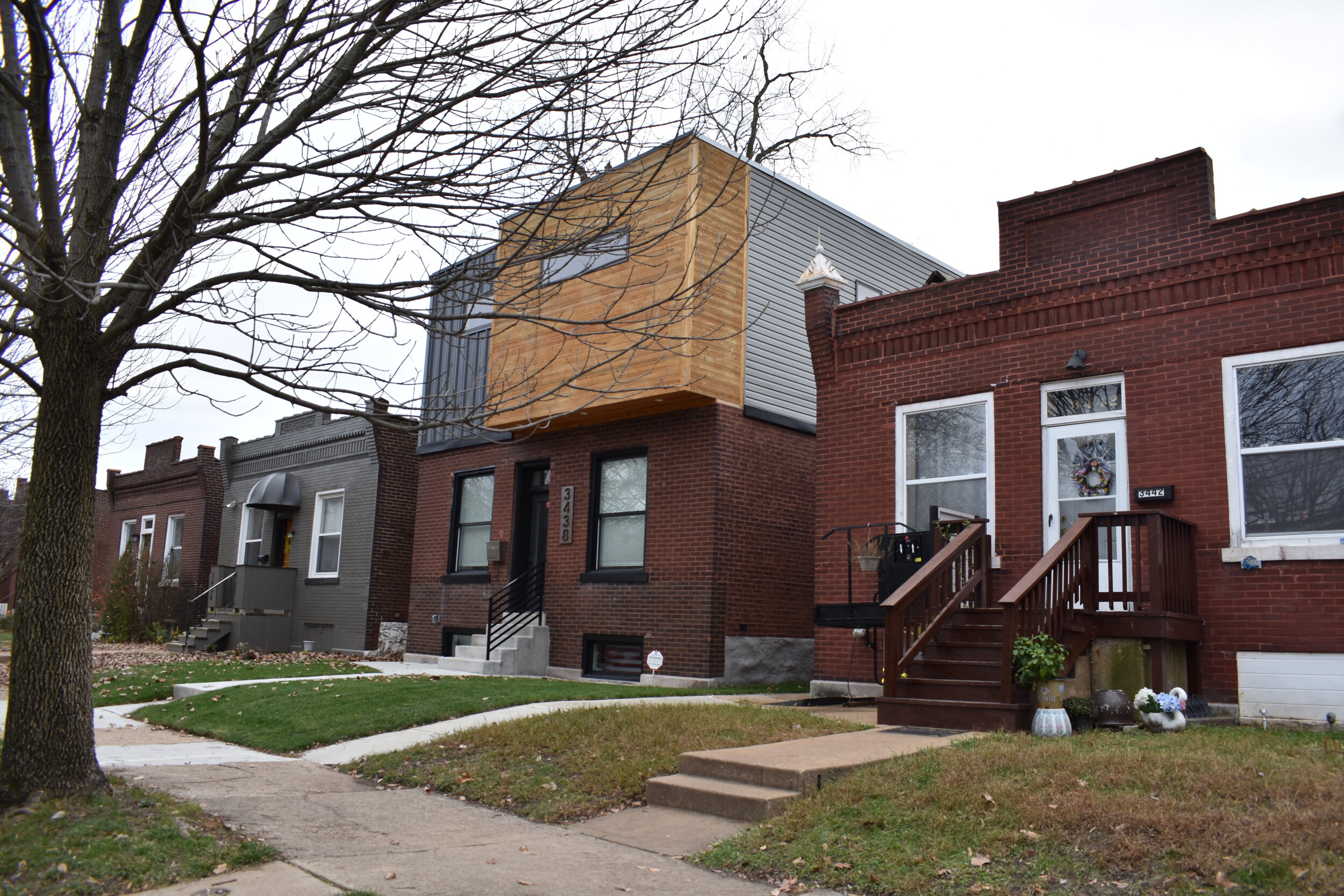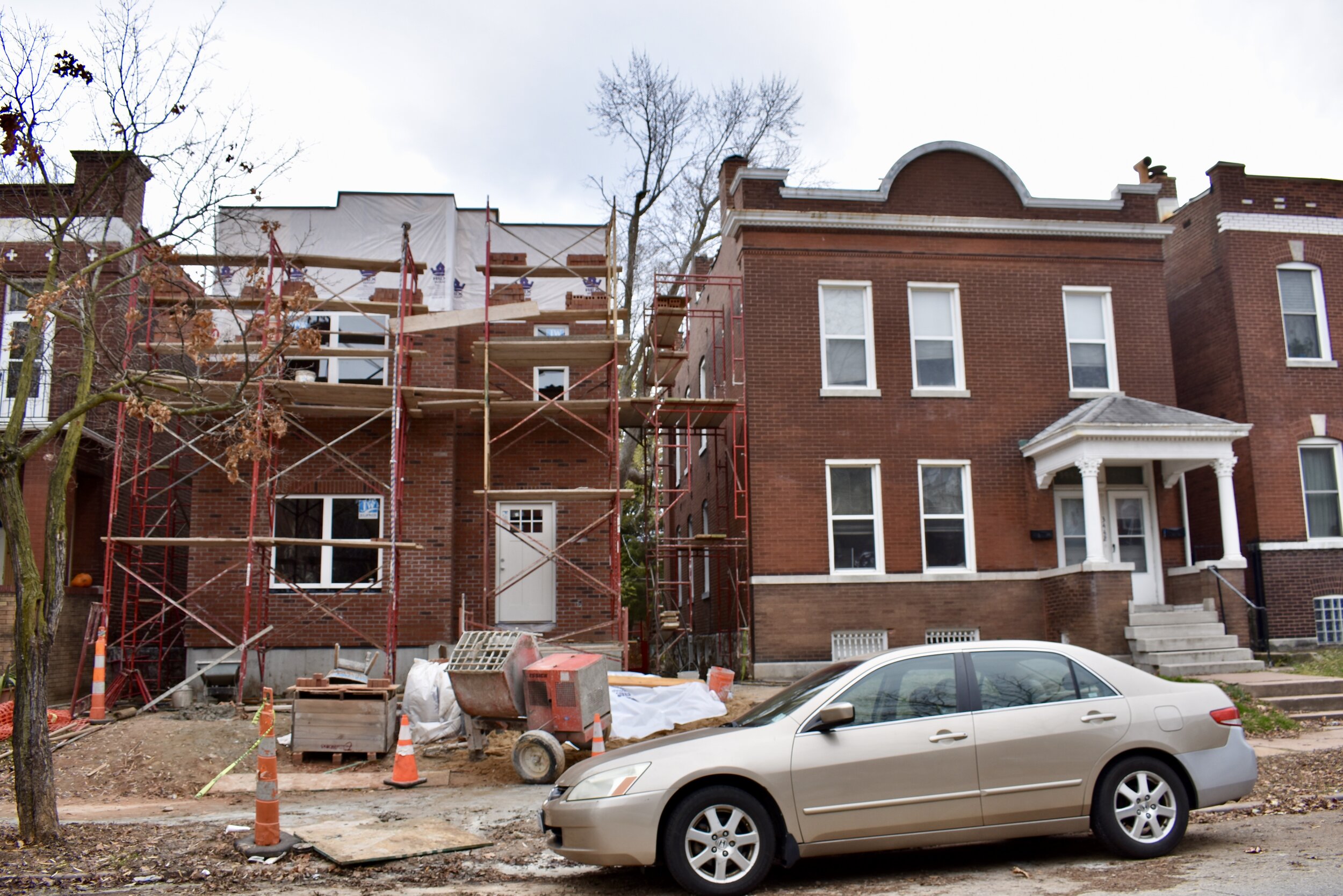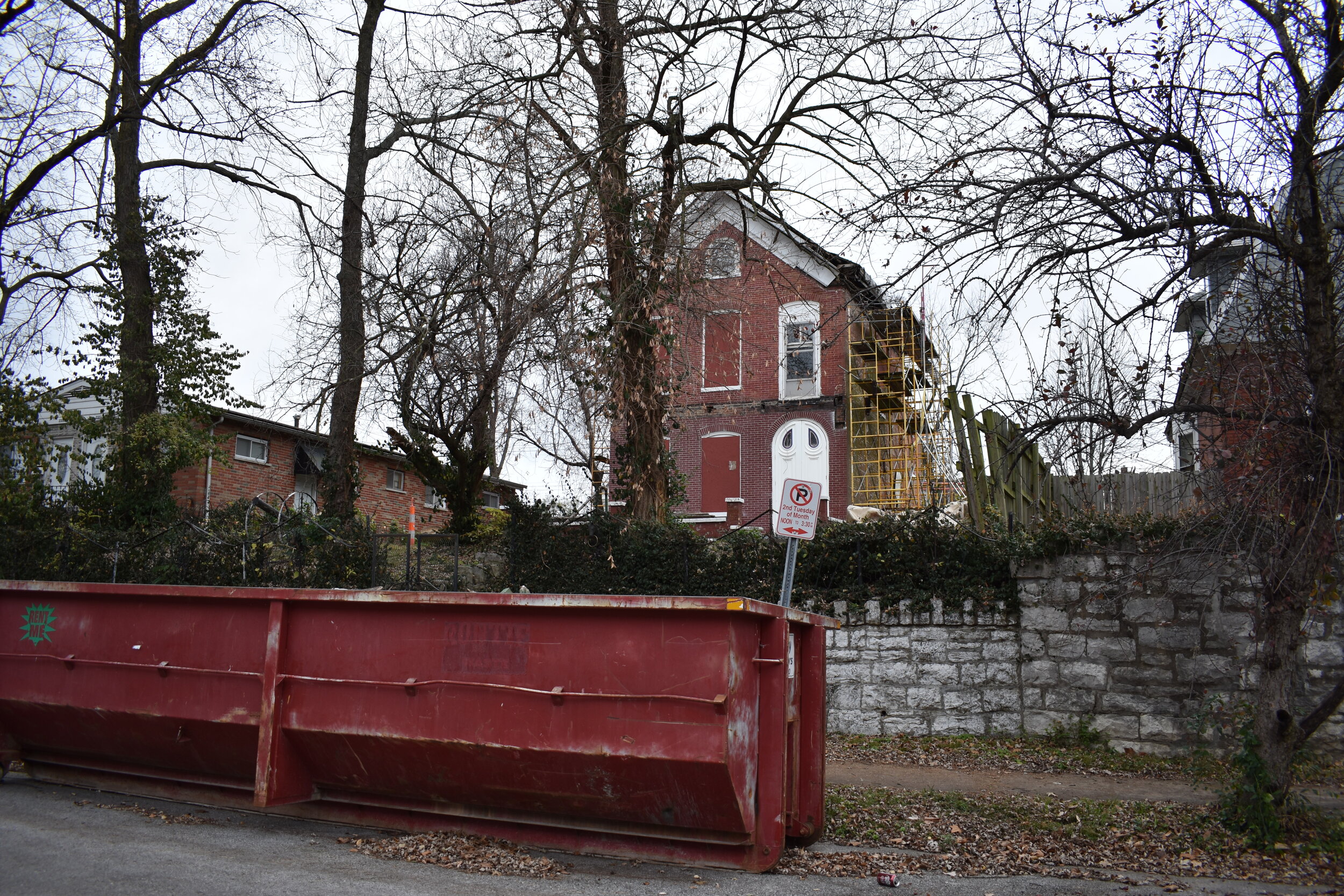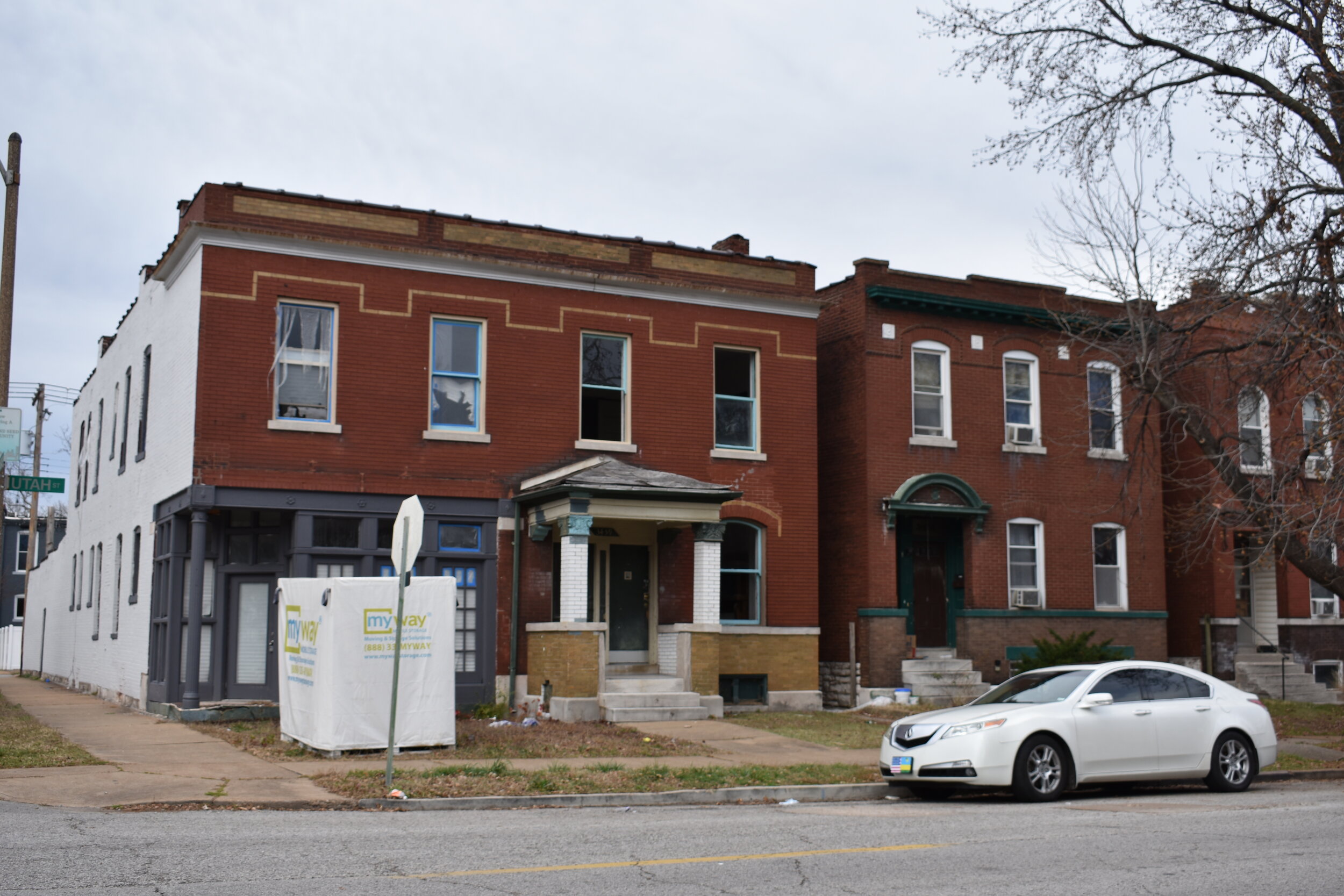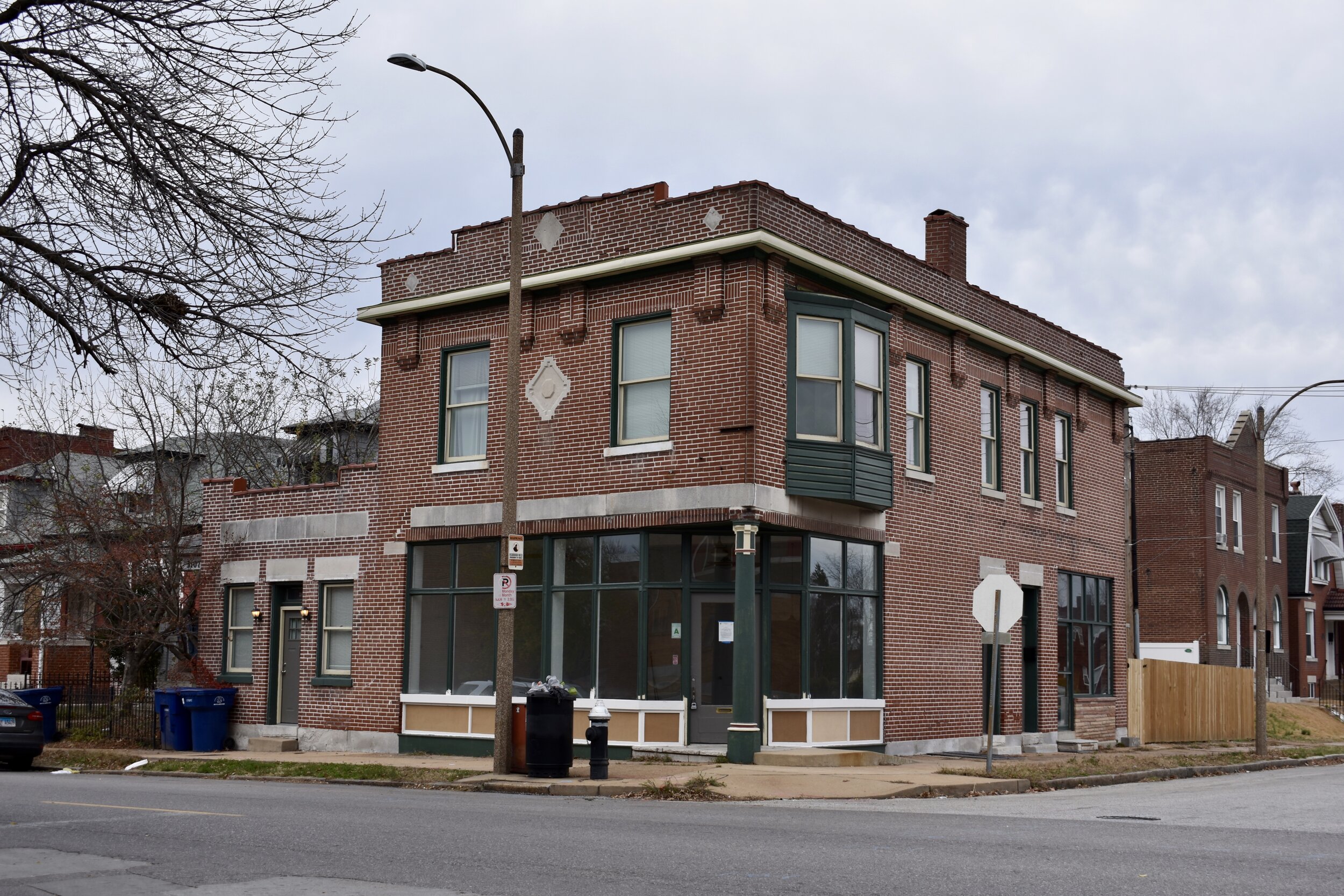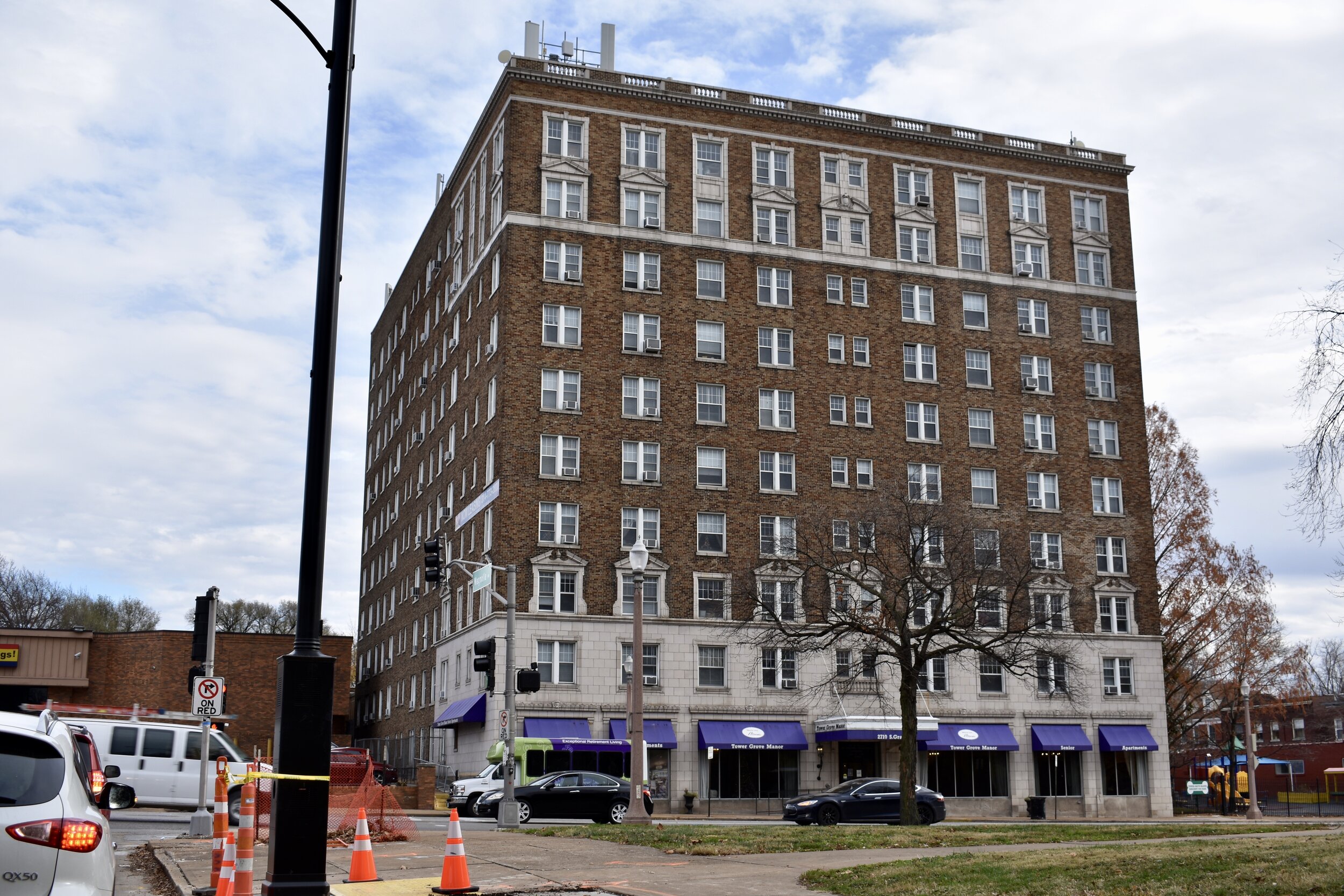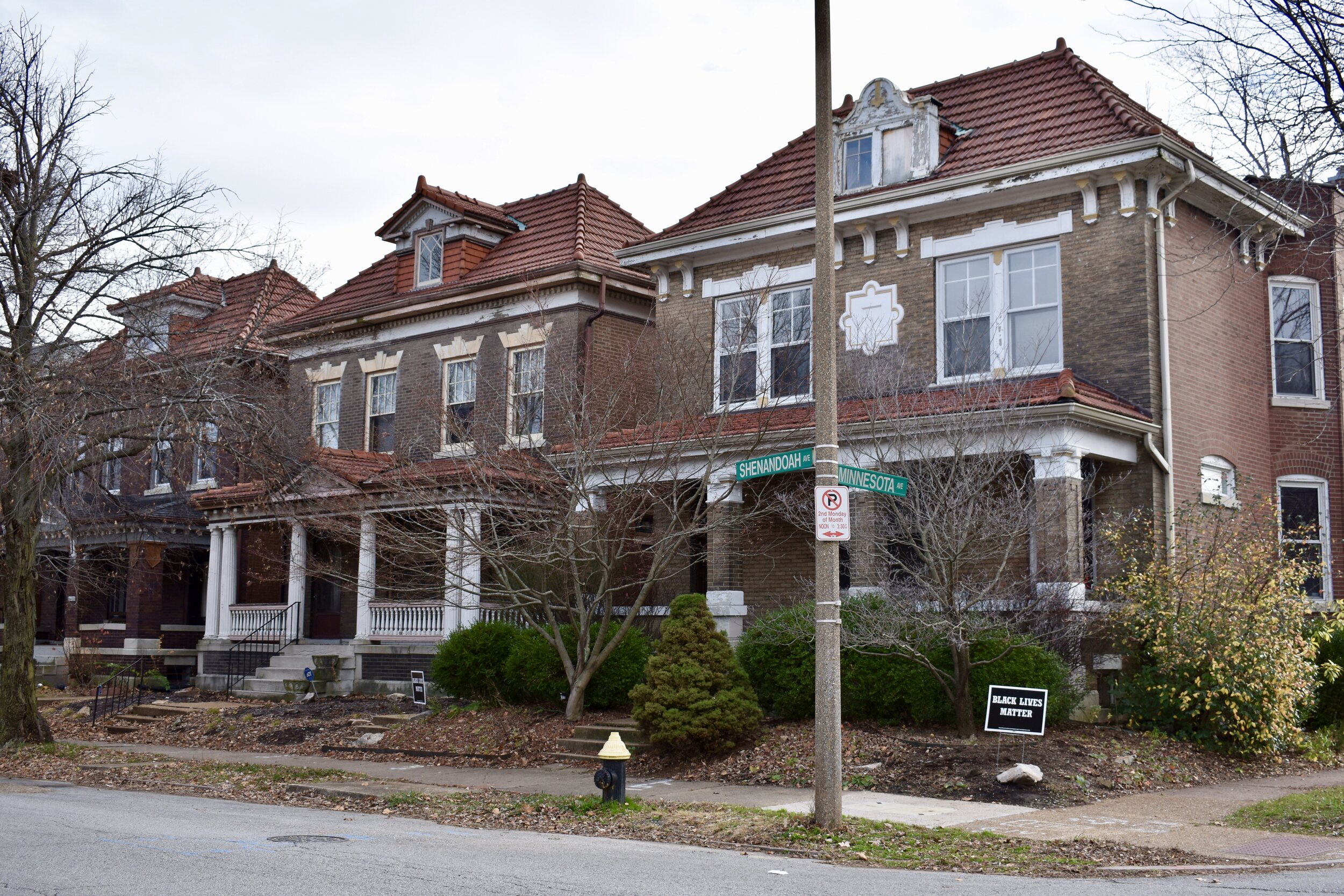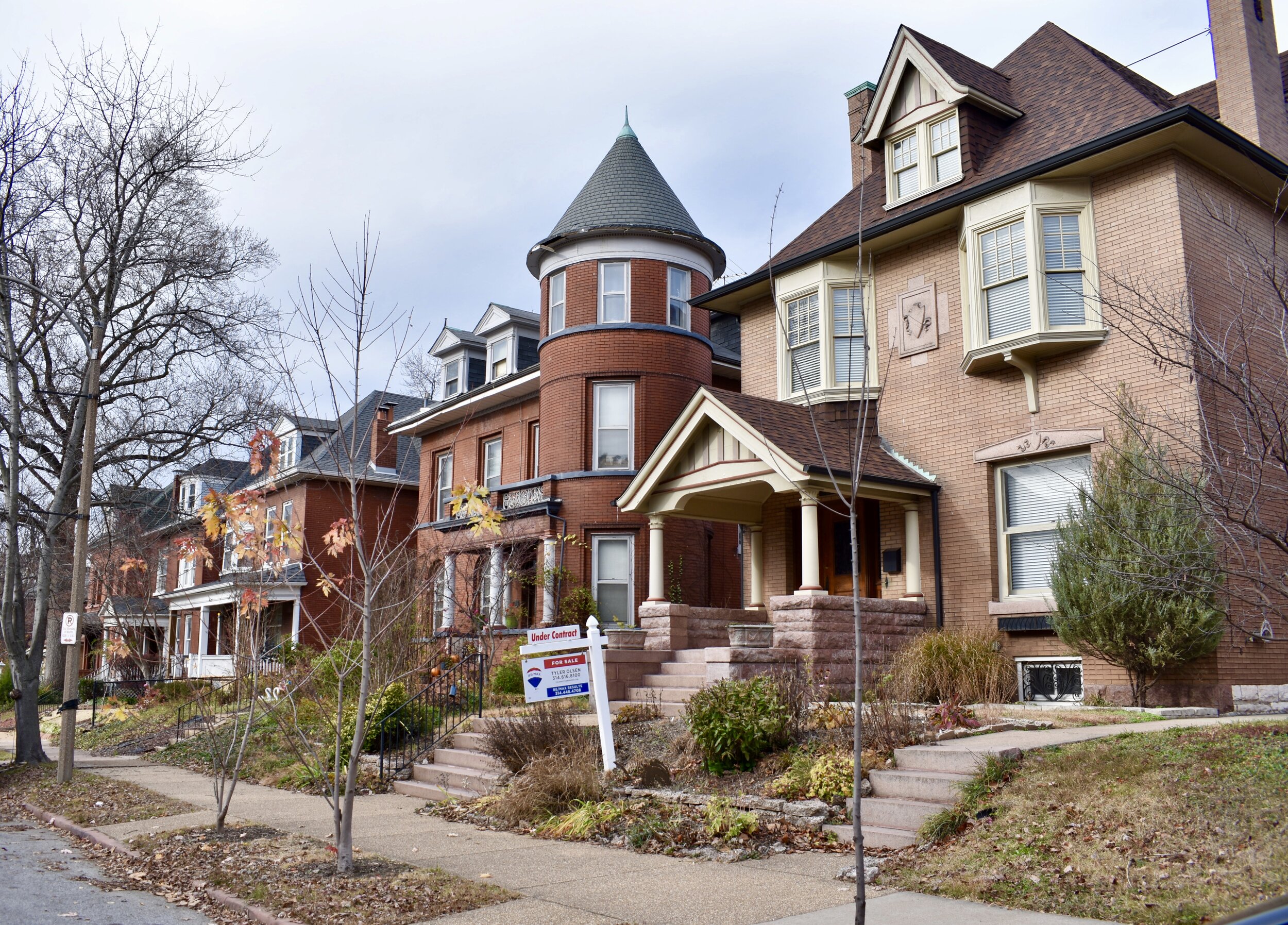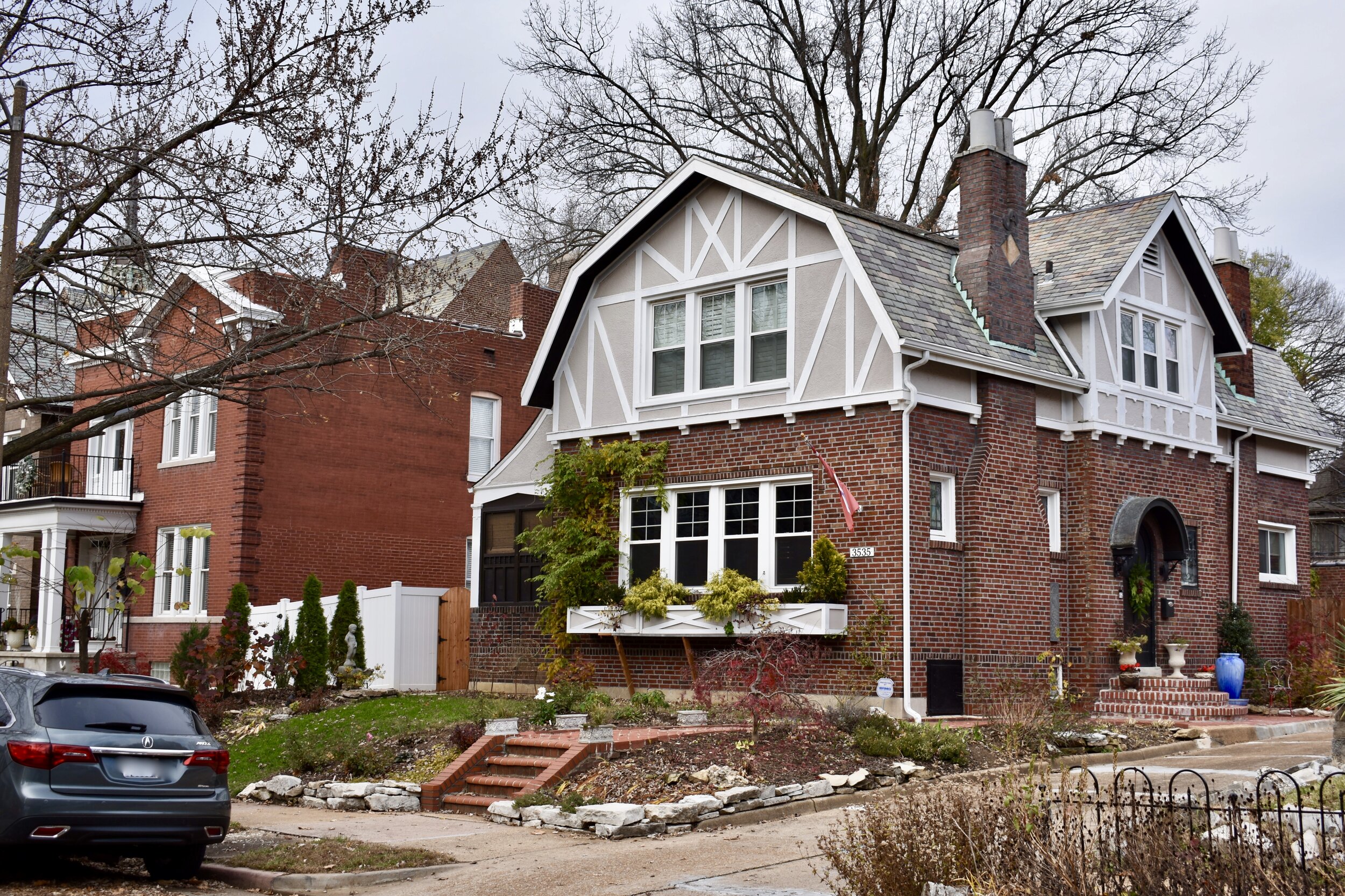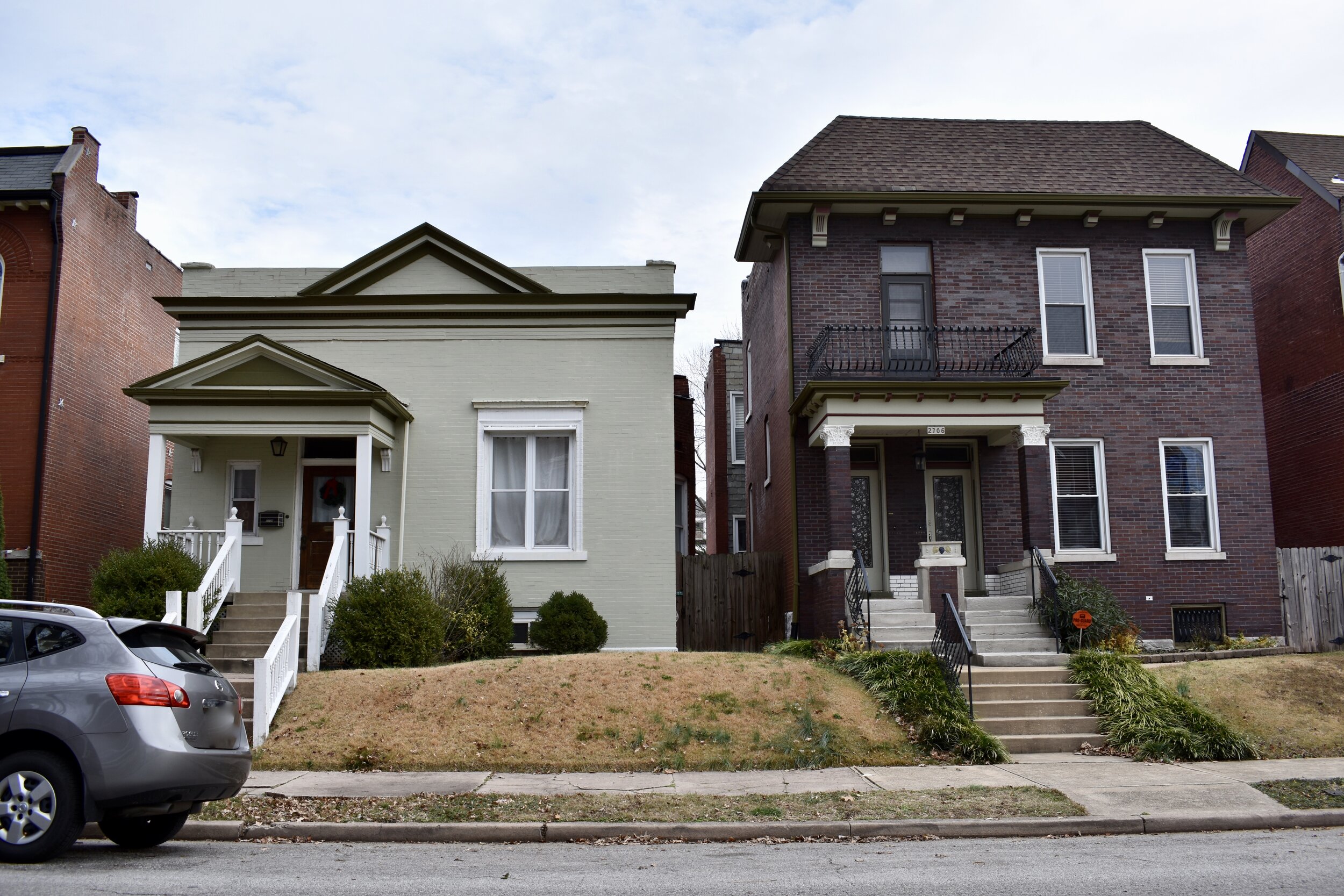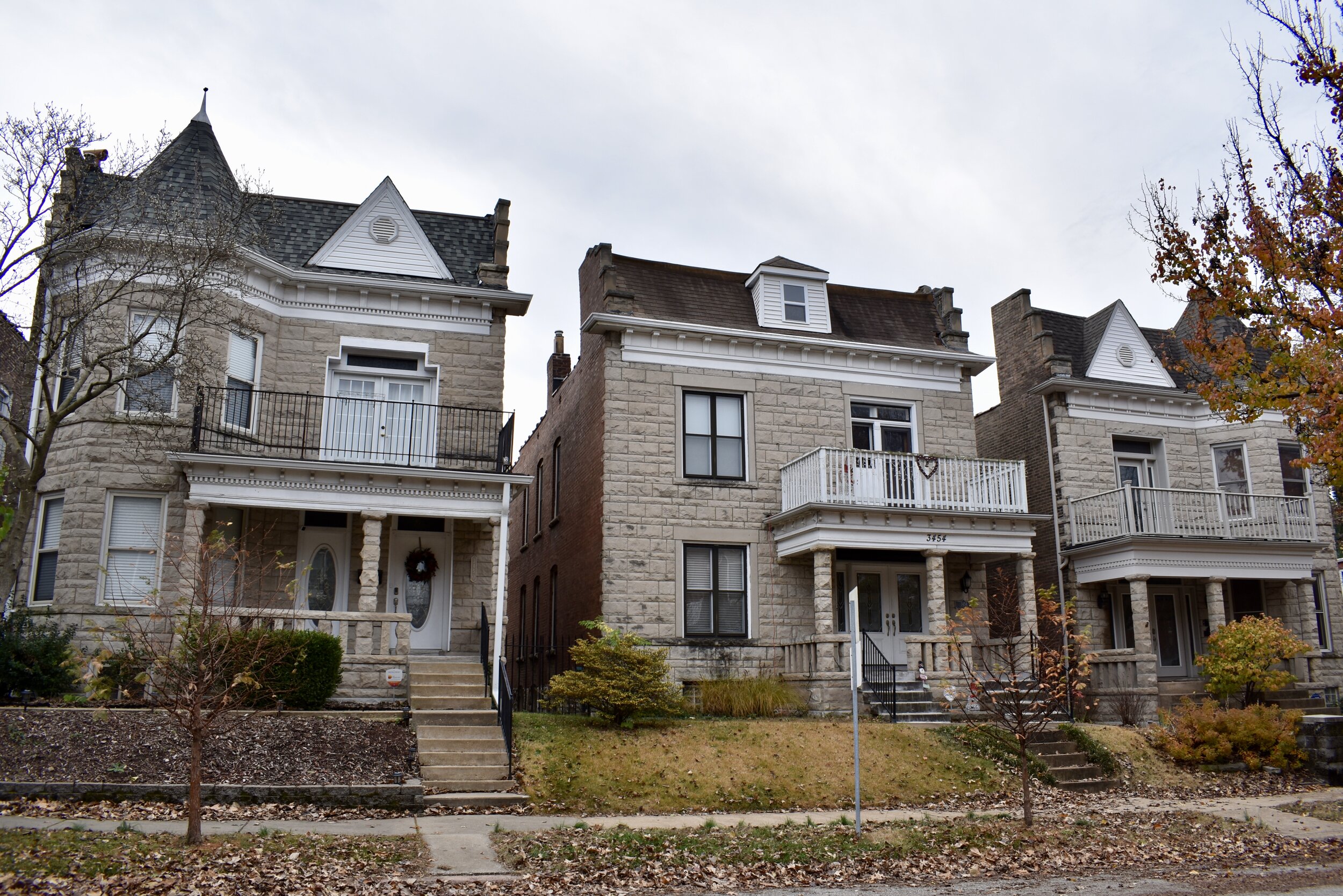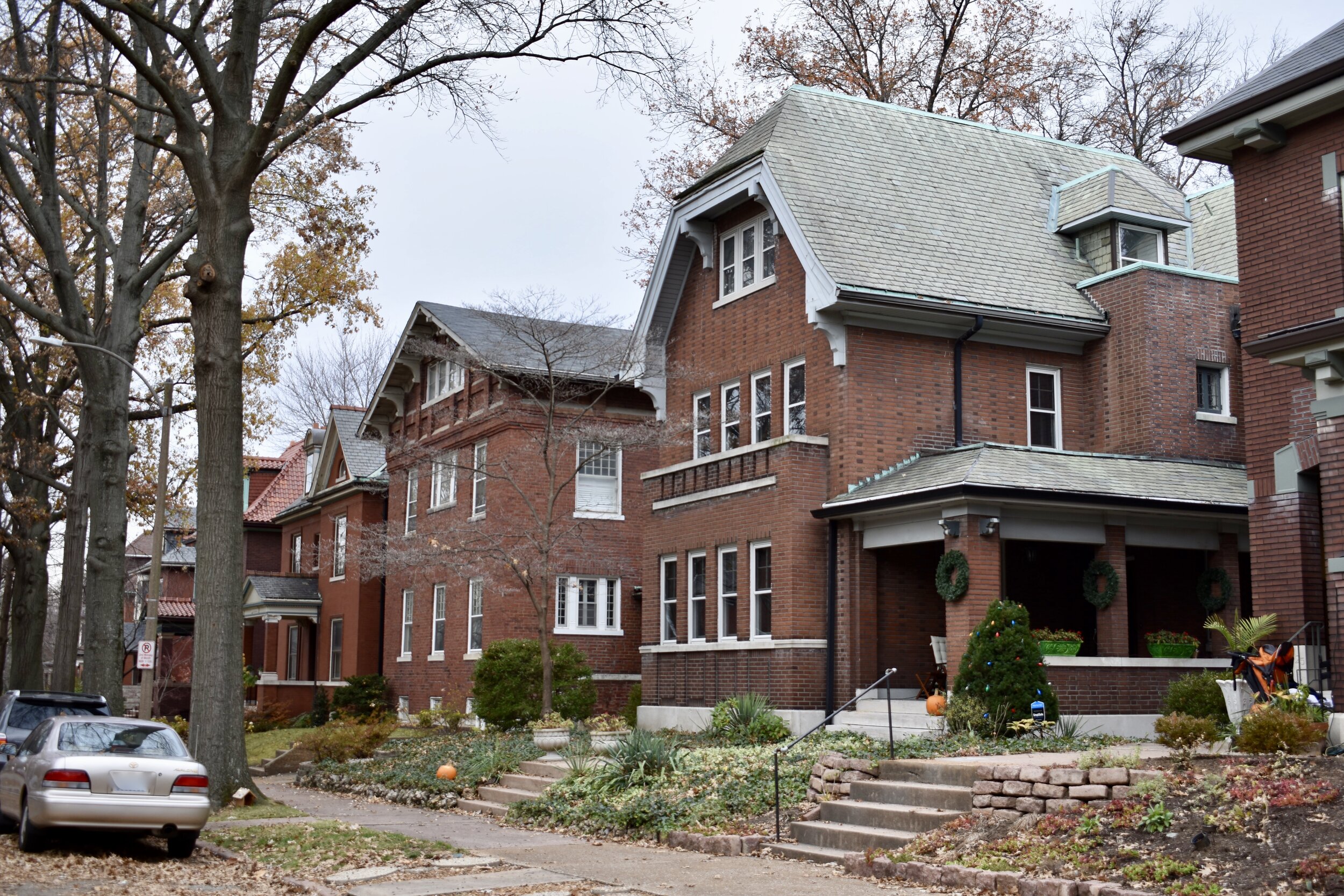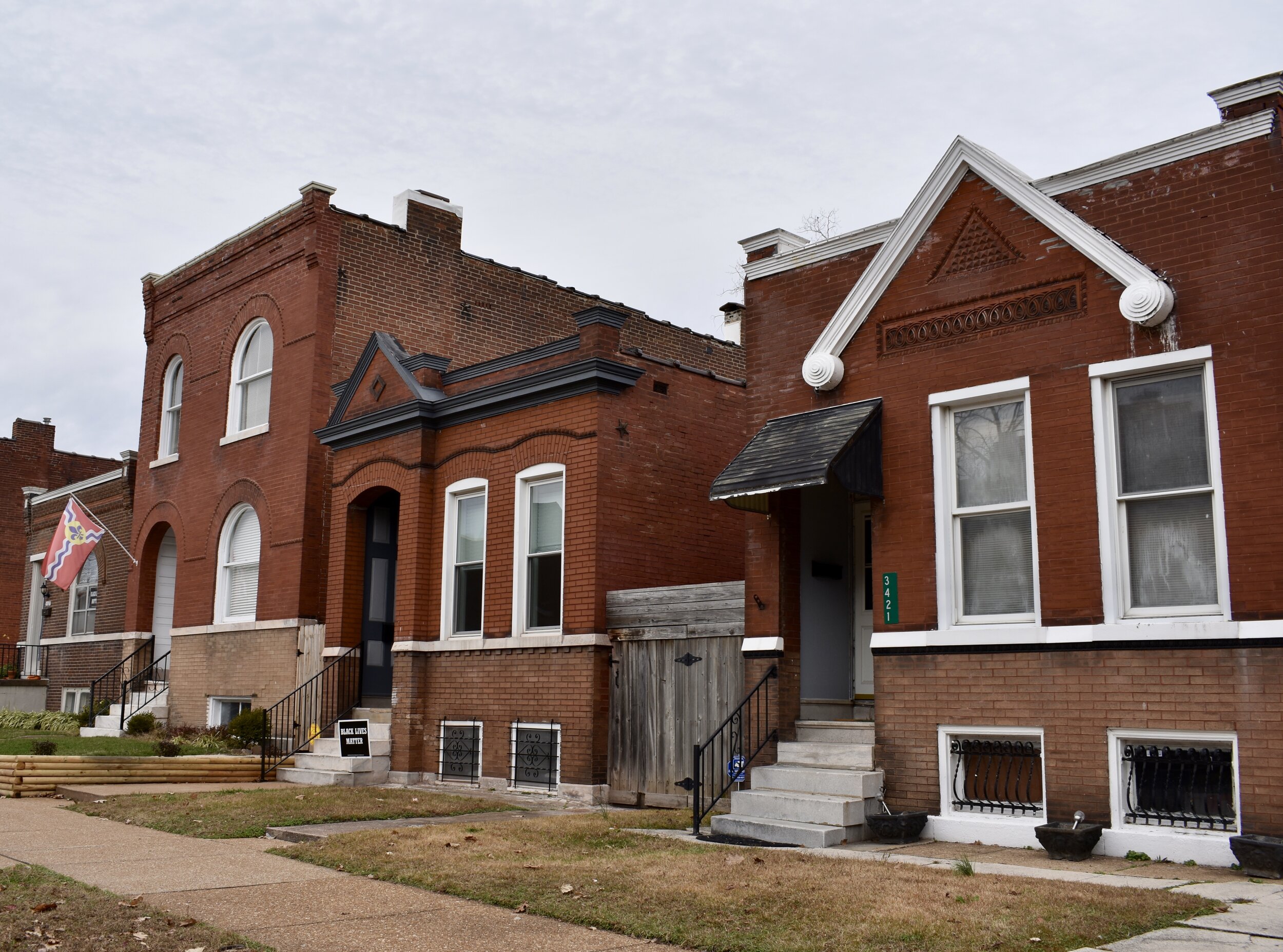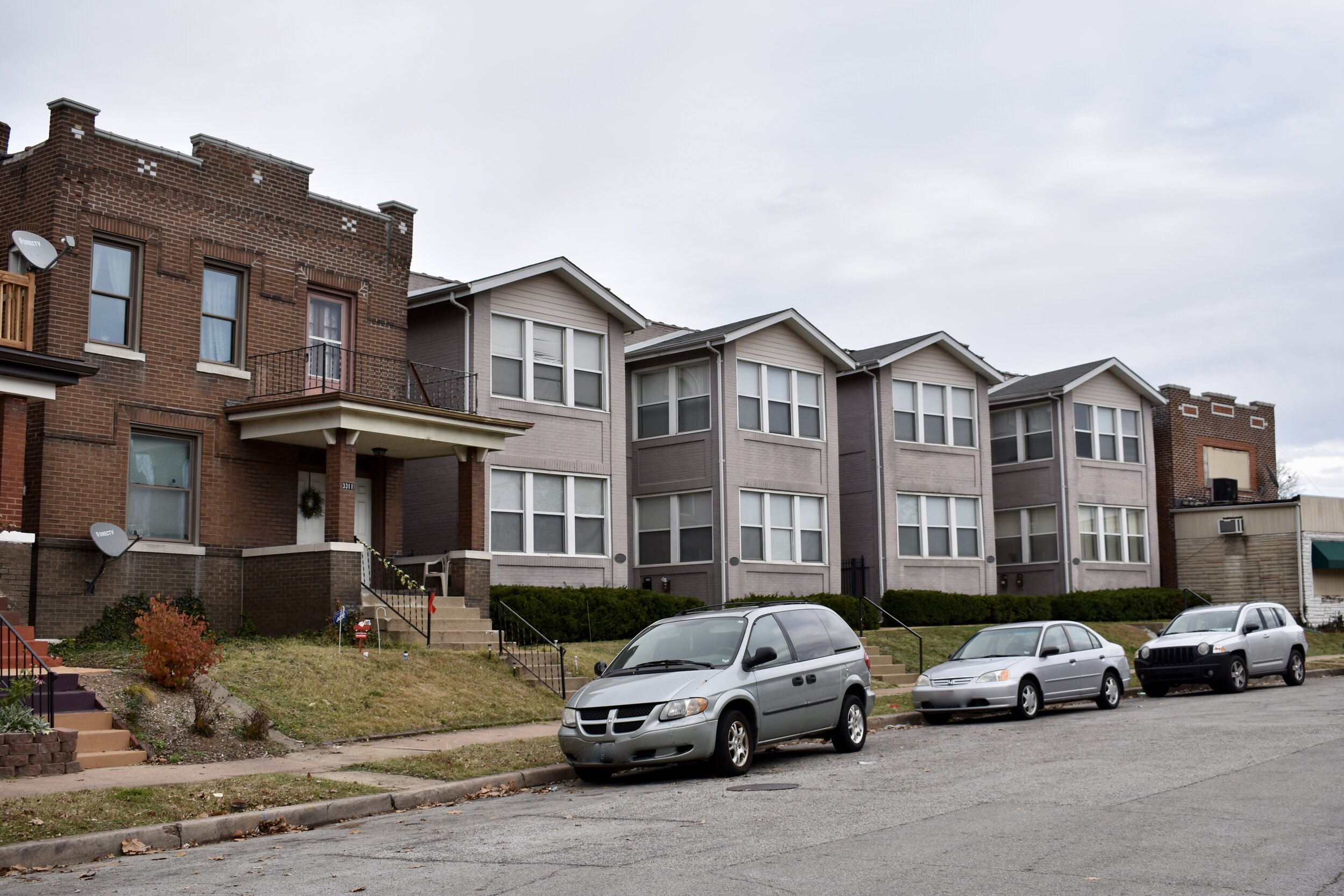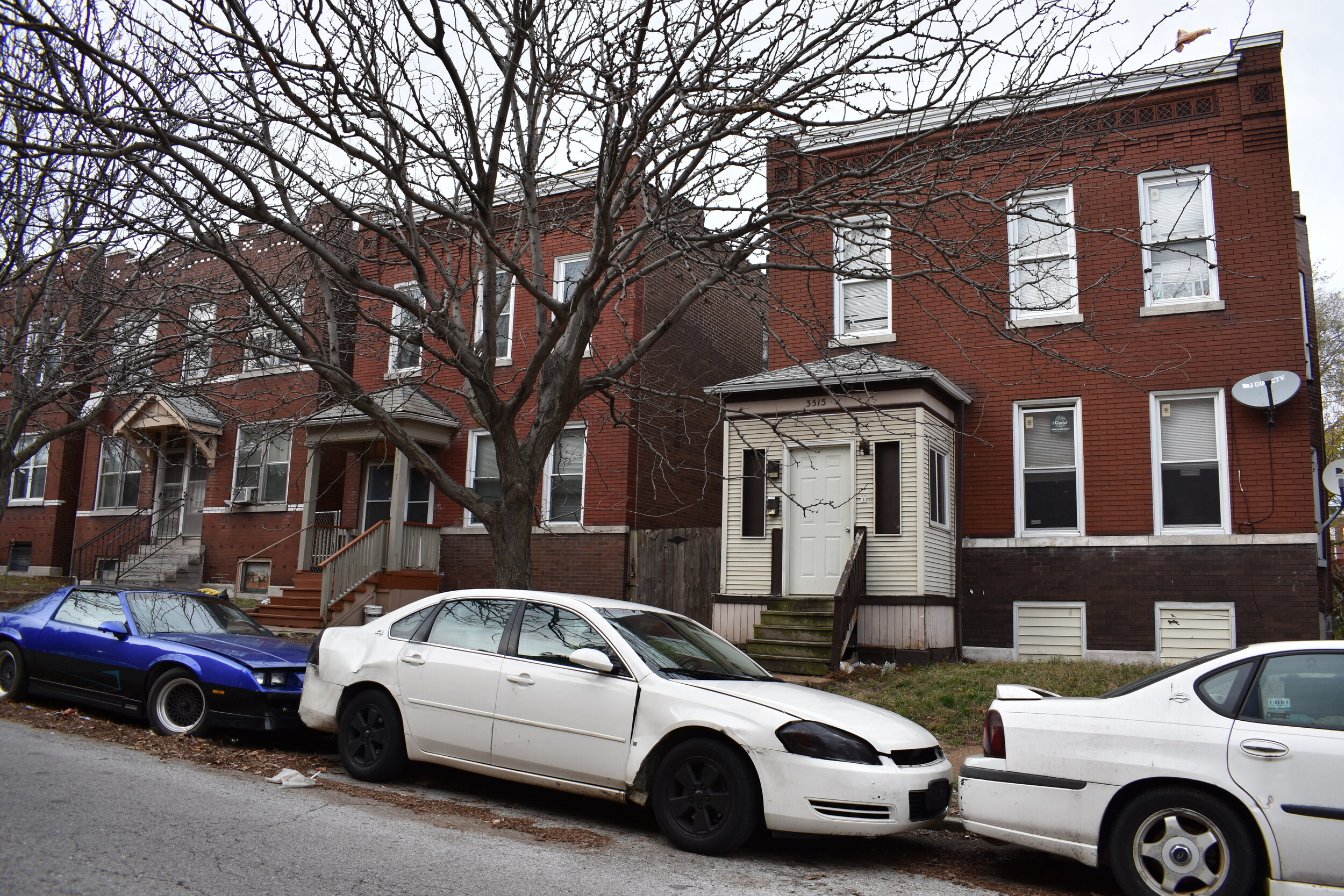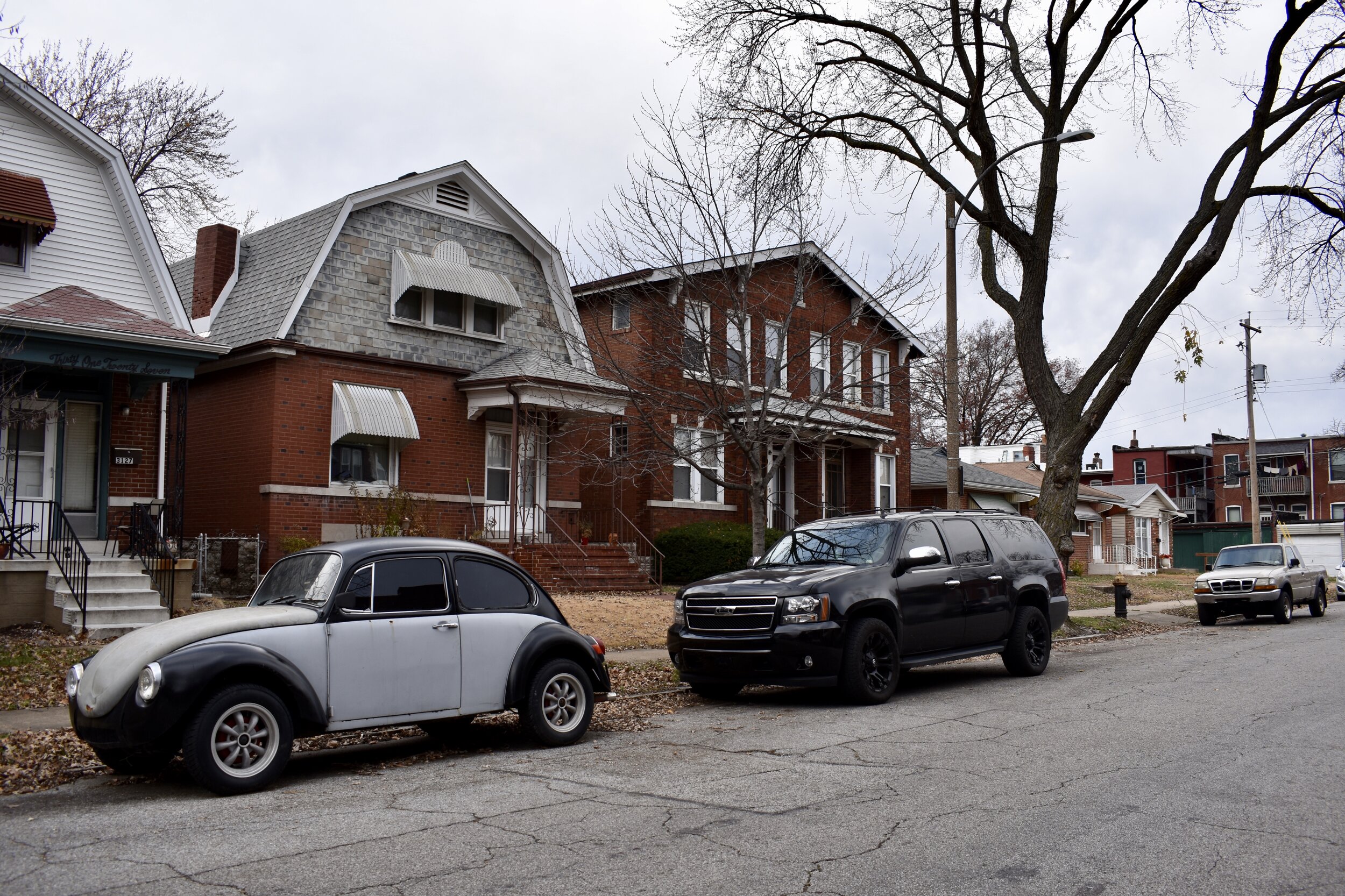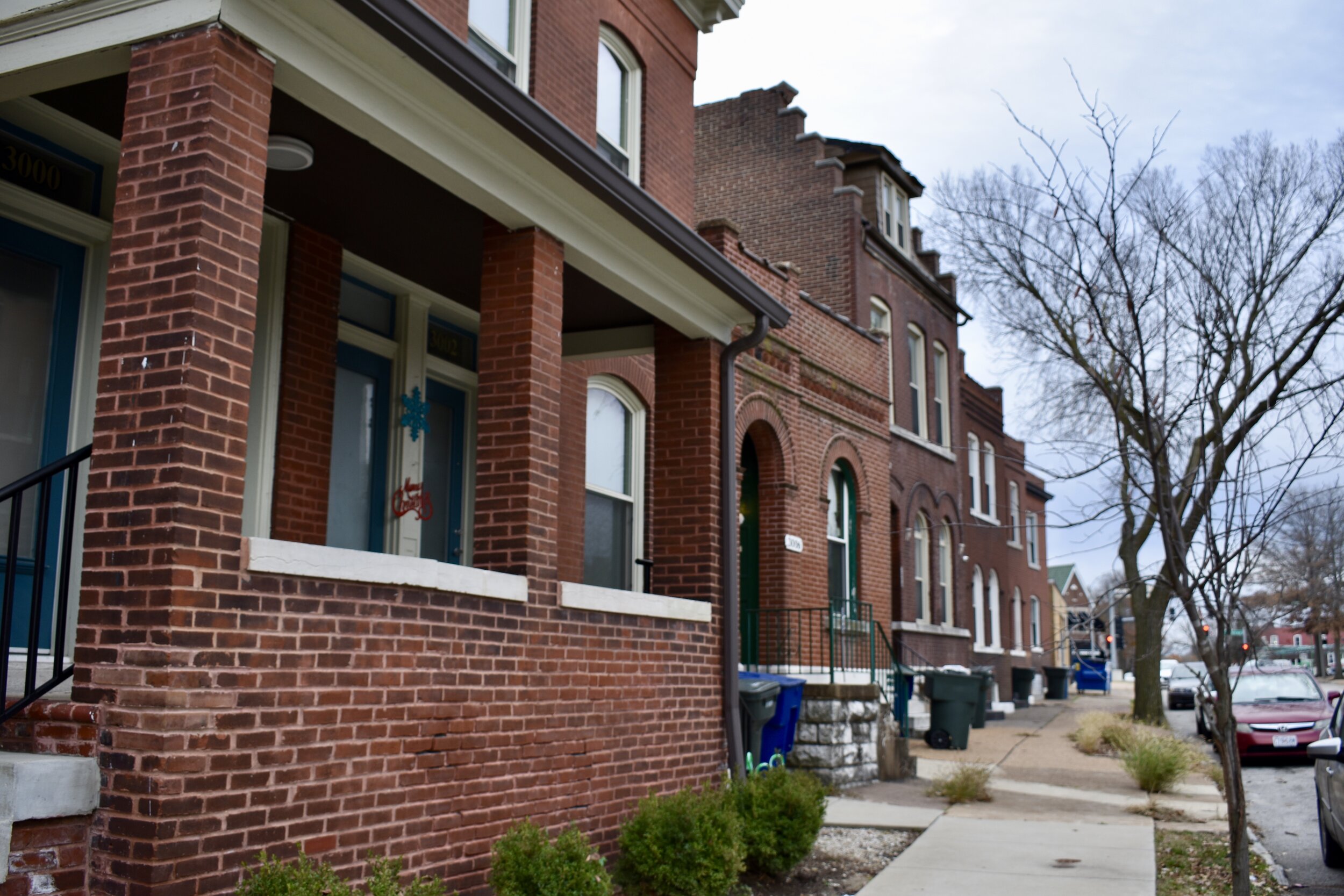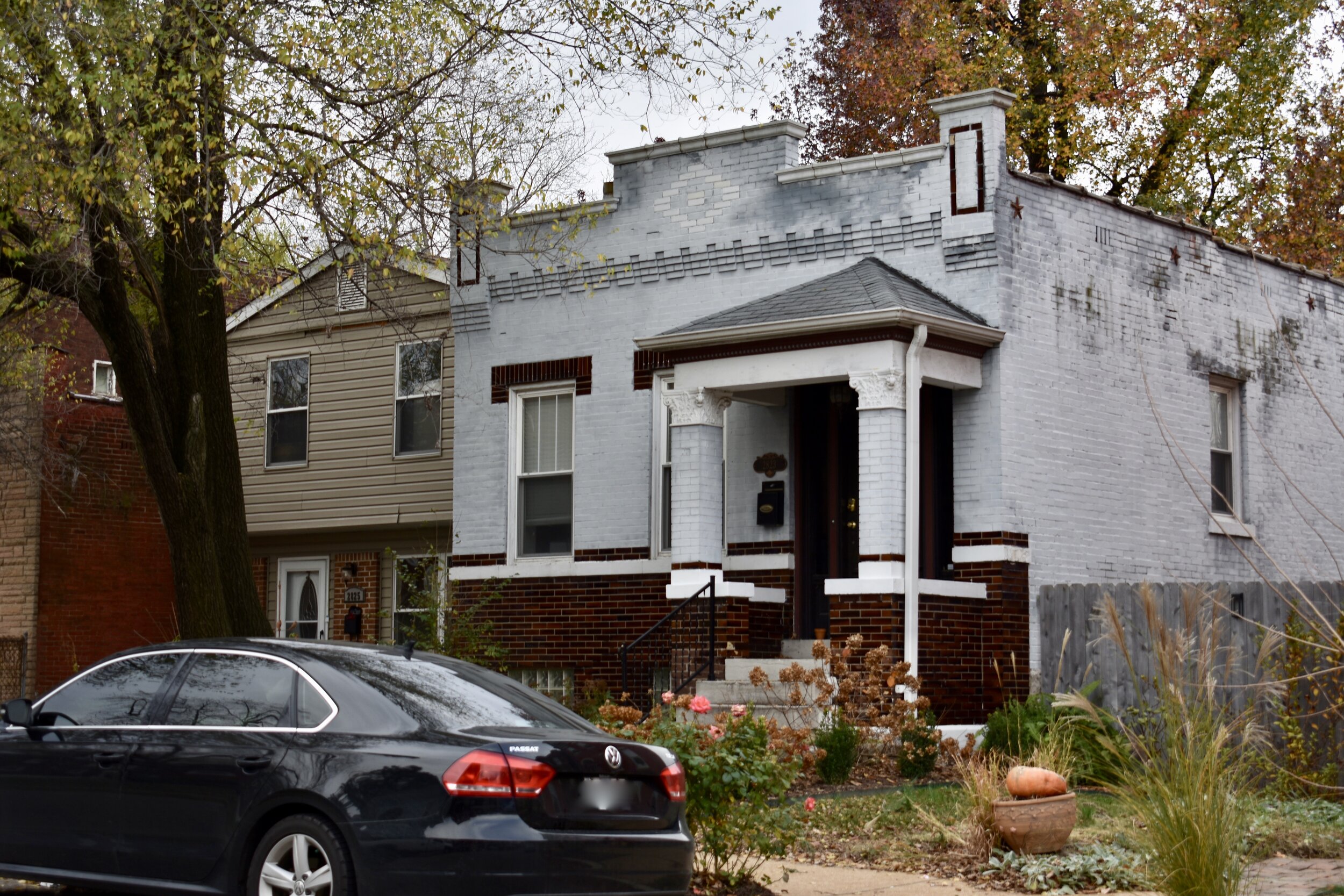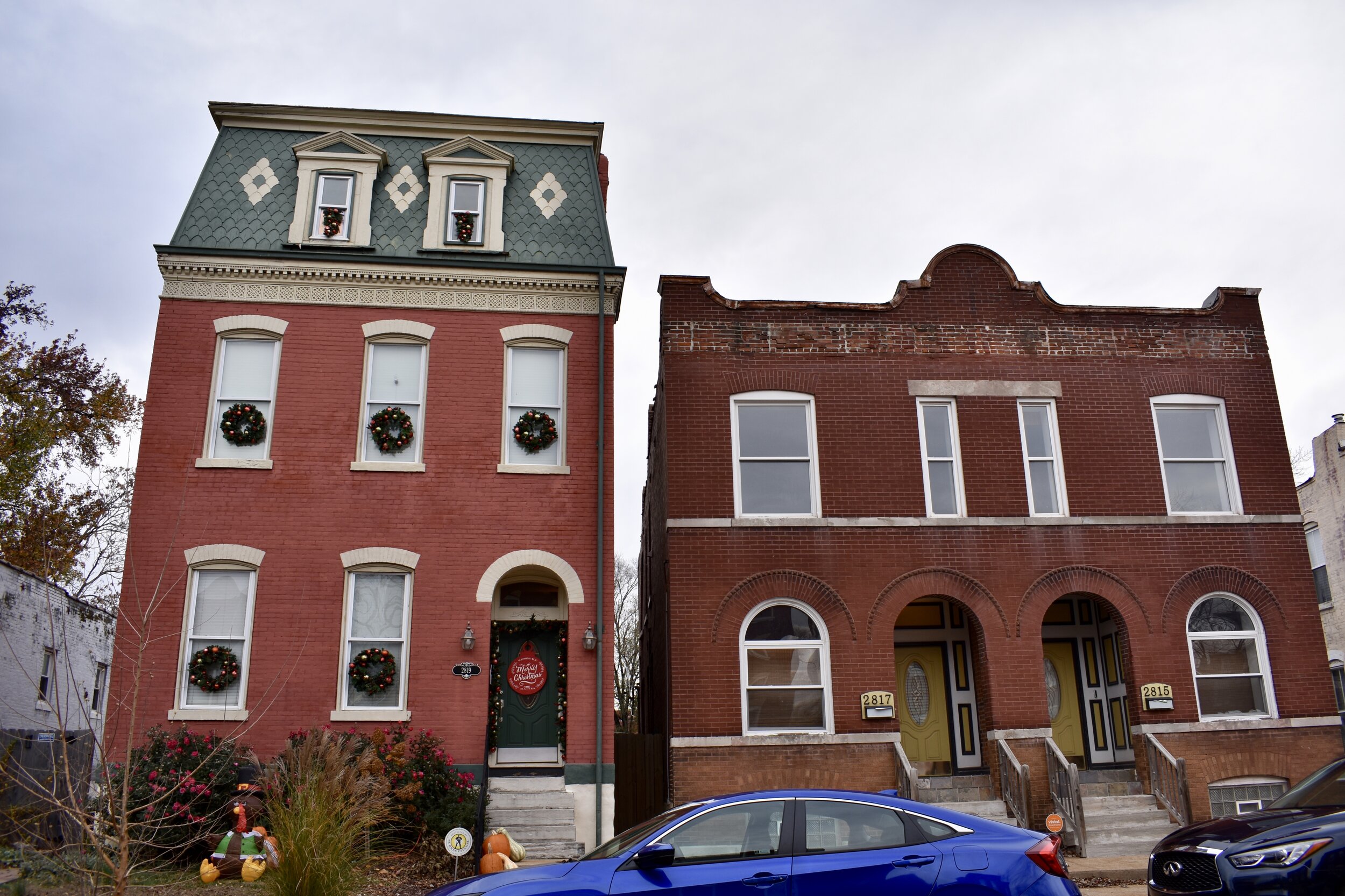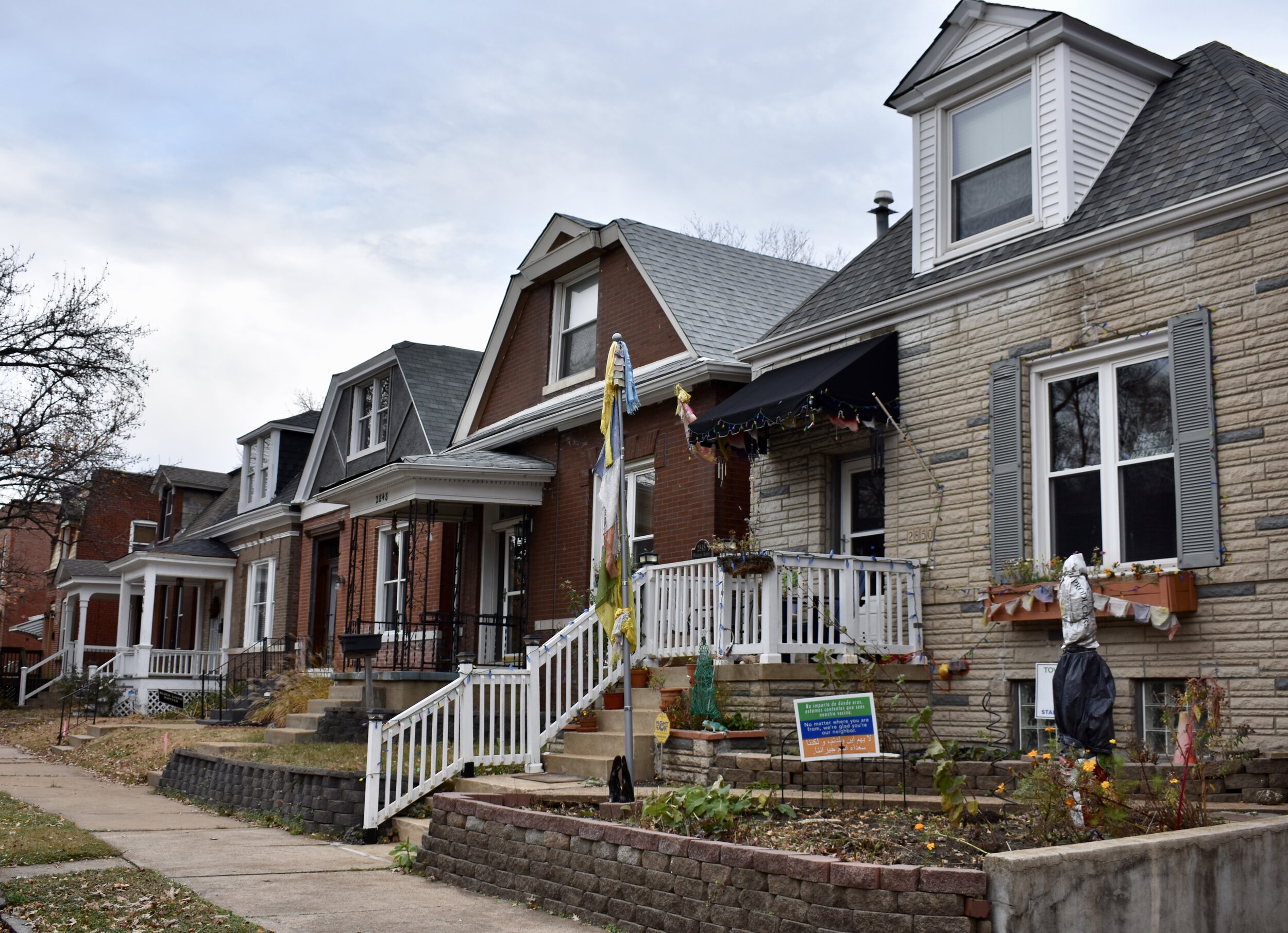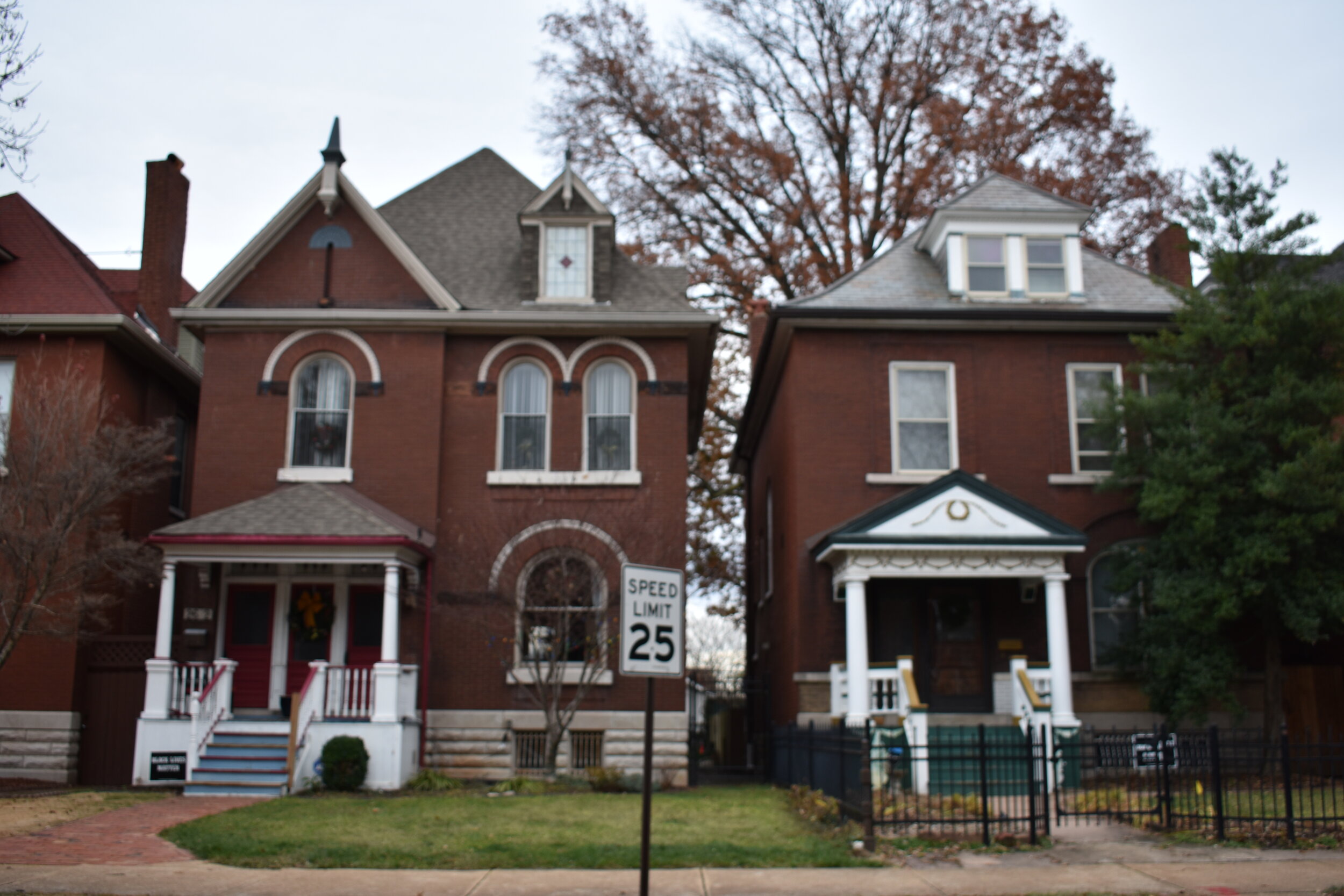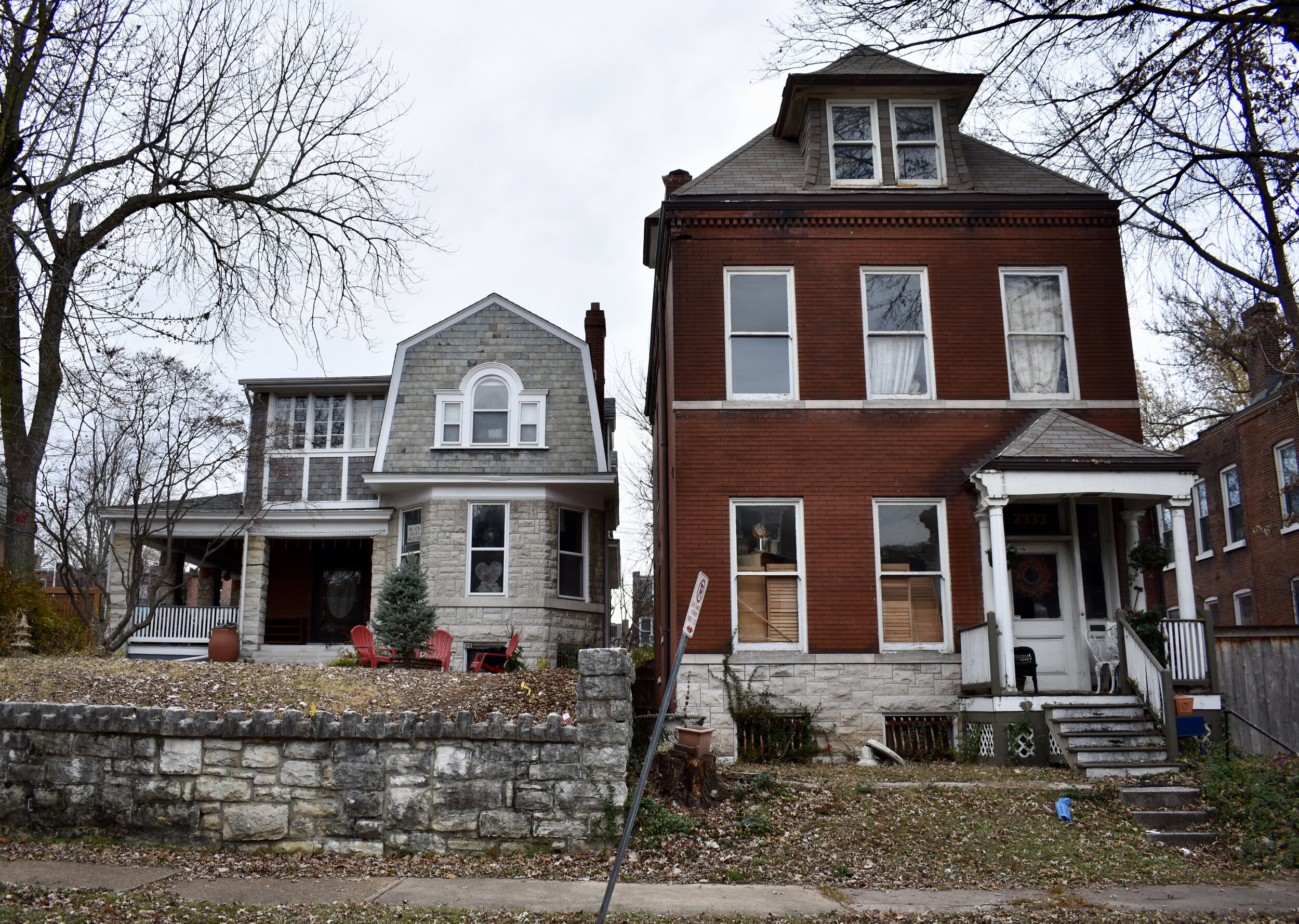Tower Grove East is a south St. Louis neighborhood bound by Shenandoah to the north, Gravois to the south, Nebraska to the east and Grand to the west:
The 2000 census data counted 7,211 TGE residents of whom 52% were black, 38% white, 6% Asian and 3% Hispanic/Latino. They lost 8% of their population from 1990-2000. There were 3,485 housing units counted, 79% occupied, 39% by owners, 61% by renters.
The decade from 2000-2010 showed a 19% drop in population, down to 5,853 people, with racial shifts to 46% white, 43% black, 5% Asian and 5% Hispanic/Latino. Total units available dropped 5%, occupancy dropped 6% but so did vacancy which decreased by 4%.
Tower Grove East holds the distinction as the most racially and economically diverse census tract in the all of St. Louis.
The decade from 2010-2020 showed a 2% drop in population, down to 5,708 people, with continuing racial shift to 56% white, 29% Black, 5% Hispanic/Latino, 5% Asian and 2% 2 or more races. 25 housing units were gained with a 83% occupancy rate.

A little background from the website:
The neighborhood was originally part of La Petite Prairie, which was settled by the French in the early 1700s. Grazing land was held in common, and farming land was divided into long narrow tracts. The commons system was abandoned around 1800, and the land began to be sold into private hands. By the 1850s much of the property was owned by German Catholics, recent immigrants from Germany’s 1848 civil war. The German dairy farmers found it ideal as pasture land. They built comfortable homes and began creating a community toward the end of the 1800s. Blocks were developed, upon which many of the prosperous German immigrants built grand homes.

Entrance Gate, Tower Grove Park Grand Ave. and Halliday, c. 1870
The owners and builders in the early days of Tower Grove East were for the most part siblings, cousins and extended family members of the prominent Germans living in Compton Heights. Thus architectural trends originating in Compton Heights and Flora Place influenced the designs of homes on South Compton, Shenandoah and several of the other residential avenues. Like Tower Grove Heights, these residences were built on the four-square plan. The typical house is a pyramid or hipped roof on a two-story cube. Often, a pressed brick or limestone course separates the stories. The original developers then varied the theme through detail choices. Attention was heavily focused on the entry, cornice and windows. Buyers would often choose the architectural elements from pattern books that illustrated multiple styles of windows, doors, stairways and fireplace mantels. Thus the interiors of the homes in Tower Grove East are full of surprises. The often austere exterior facades typically hide a wealth of richly designed entries with carved fretwork; built-in hall benches, mirrors and bookcases; wood paneling; stained-glass windows and elaborate staircases.
This section of the city is my favorite. Shaw, Tower Grove South, Fox Park, McKinley Heights, Compton Heights... and of course Tower Grove East. There has been an amazing amount of investment in this neighborhood in the last 10-15 years. This used to not be such a nice place to live or even drive through. I've seen some crazy stuff in my time living in the city; and there used to be a lot of bad guys living and doing business here. I witnessed some drag racing in this neighborhood that made my head spin. There were guys blocking traffic on the side streets so these guys could drag race their cars in the neighborhood. This kind of ridiculous behavior doesn't exist today. Investment is up, people who care and want to live here are in higher numbers. The poor stewards of properties are being displaced by those who want and can care for these aging beauties, and their hard work and investment is starting to really pay dividends. Those who have lived in TGE for years are now reaping the benefits of sticking it out through the rough years. Call it gentrification, call it up and coming, call it a pendulum swing back toward the original pride of the neighborhood, what ever you want to call it, you can't deny there is cumulative positivity in this neighborhood that is growing and starting to tip the scales of negativity to something more healthy and sustainable.
TGE is stunning. Walk down the streets and be amazed. Most streets are lined with mature trees and classic homes. From the mansions near Grand to the more humble, but no less stately, smaller homes, this place is a virtual candyland for St. Louis lovers. It has all the housing styles that make us the world class architectural city that we are. I took over 200 photos of this neighborhood. I couldn't stop being amazed. Each block, each street, each home has something worthy of appreciation.
Today was a beautiful St. Louis spring day, and the neighborhood was buzzing with activity. Dog walkers, stoop sitters, rehabbers, stroller walkers, bicyclers, cars being washed in the streets, flowers being planted, yard sales popping up. People were in a good mood, I struck up some nice conversations with many TGE'ers and there is a good feel here. I spoke to a woman probably in her 70's who was so proud of her home, I asked her if the neighborhood is nice and she commented that it's gotten much better in the past few years. She's seen the ups and downs and is feeling good about the direction the neighborhood is headed in.
Fox Park and McKinley Heights are similar to TGE, but I did notice a few things that stood out over those hoods.
First, TGE has some great garages:





Secondly, there seem to be more flowering trees than any other neighborhood I've seen.




Thirdly, TGE seems to have some of the most attractive corner properties in the city.










The churches are amazing, as are the schools. The spirals adorning the entry to Shenandoah School are my favorite in the entire city.


Churches of various faiths:




Roosevelt High School is a work of art.


St. Elizabeth Academy has a beautiful campus within the neighborhood. This approach to the campus is the most stunning (my photo doesn't do it justice). It totally fits in with it's surroundings.




Attractions and amenities wise: Tower Grove Park is a short walk, as is the Grand South Grand restaurant strip that graces Tower Grove East. Grand really looks good in TGE, with the exception of the Schnucks property (dirty, crude store) and the grocery store at Maganolia has seen better days as well.
I must plug my favorite TGE restaurant the Shaved Duck. This place has delicious baked beans, mashed potatoes, brisket, pulled pork, etc. Meskerem, Jay's International, Sekisui, Cafe Natasha are all places worth checking out as well.







TGE is home to the greatest asset on the St. Louis FM dial- KDHX 88.1:

Some other sights along Grand:









Some TGE nuance:






The homes north of Arsenal are a little more polished than those to the south. The homes closer to Gravois are rougher. But it's the homes that make this neighborhood what it is. I took so many photos, I'll try to list some of the best examples of the varied styles within TGE:


































I really like this next one. If anyone know the architectural style, or what these homes are called, let me know. It's the porch that makes them so cool:











I'm bullish on this neighborhood being the next Lafayette Square, Soulard or Holly Hills because there are very, very few empty lots (they do exist in small numbers) and the original housing stock survived the roughest years from ~1960-1990. You have to see this neighborhood, and walk it's streets to realize what a special place this is. Get out and enjoy the spring weather and take a walk in a part of town you've never been before. Something awe inspiring is around every corner in this town.
***In December, 2020 I revisited the neighborhood and the following includes updated commentary and photos.***
Misses On Original Tour
Tower Grove East does not have a park within it’s borders; but Tower Grove Park is an obvious asset just across South Grand.
I didn’t include the 1893 Grant School, expanded by William B. Ittner in 1902 and rehabbed into affordable apartments in the 2005 timeframe.
My gentrification talk was a bit naive and uninformed. The 2000-2010 years were a flurry of reinvestment and rebounding from the rock bottom seen in the late 1980s, early 1990s. Home prices skyrocketed. This part of town was the scene of some rough areas in the 1990s when I first moved to St. Louis. Textbook gentrification? There are few signs of new offerings that cater exclusively to yuppy ideals, unless you find Starbucks, Steve’s Hot Dogs and Tick Tock Tavern as such. But if you’ve ever been in these, they appear to be patronized by a wide swath of society, many of whom walk to these places. They are welcomed additions if you ask me. The form of the Starbucks sucks though, but is not the worse I’ve seen. Overall, TGE business is static, or on the downside due to COVID-19.
There are also few to no signs of multi-unit apartments being demo’d for single family homes or luxury apartments. There are multi-families being reduced to single family, though. This is, of course, an American trend of smaller families, spaced-out extended families and the desire for more/modern living space.
This is still, undoubtedly, a rental/owner mixed neighborhood; but the 2020 Census data will tell the story with accuracy vs. my scooter ride observations.
The incredible apartment buildings look pretty awesome from the street.
I didn’t mention the Tower Grove Abbey. I know this neighborhood much better now that I’ve lived just to the east for the last ten years.
I have a realtor friend who told me they have clients that desire “garden streets”, well you’re in luck, TGE has one on Humphrey, right across from Roosevelt School. And, it’s a majestic scene…
Roosevelt has built a pretty strong football team over the last ten years; the field is handsome and has a cool old-school ticket booth near Gravois.
I under-represented the diversity of housing styles. I hope to fix that here, with some more photos of white, maroon and green glazed brick fronts that are way more common in Dutchtown, but exists here as well.
Noticeable Changes
St. Elizabeth Academy closed, but that made space for the International Institute, a St. Louis treasure.
KDHX moved to Grand Center. Again, there is a Starbucks on Grand and Sidney as well as a Dollar General and Ruler Foods in the former Kroger/National at the same intersection. There are some new places on South Grand as well, including Rooster, and others. Again, there are a couple new intra-neighborhood businesses like the Tick Tock Tavern and Steve’s Hot Dogs.
The old school corner market places are still there. I missed a photo of the one on Victor and Nebraska, but here are two examples.
There are several new-ish residential homes under construction or recently completed. It’s not staggering though like in other nearby neighborhoods like the Gate District or the Hill.
The former St. Pius V school building was converted into 25 market rate apartments around 2016/17.
I didn’t see a tremendous amount of rehab dumpsters or the like, but there are some signs.
To me, the original photos paired with these speak to stability, not sweeping change. The drastic change was likely in the 1990s - 2010s.
What Are The Future Needs?
Traffic calming has been addressed, albeit slowly. You will see excellently placed speed humps, a roundabout, temporary bump outs, angled intra-neighborhood parking and gates along South Grand. There is more need here as Compton Avenue is the scene of erratic speeding on a daily basis.

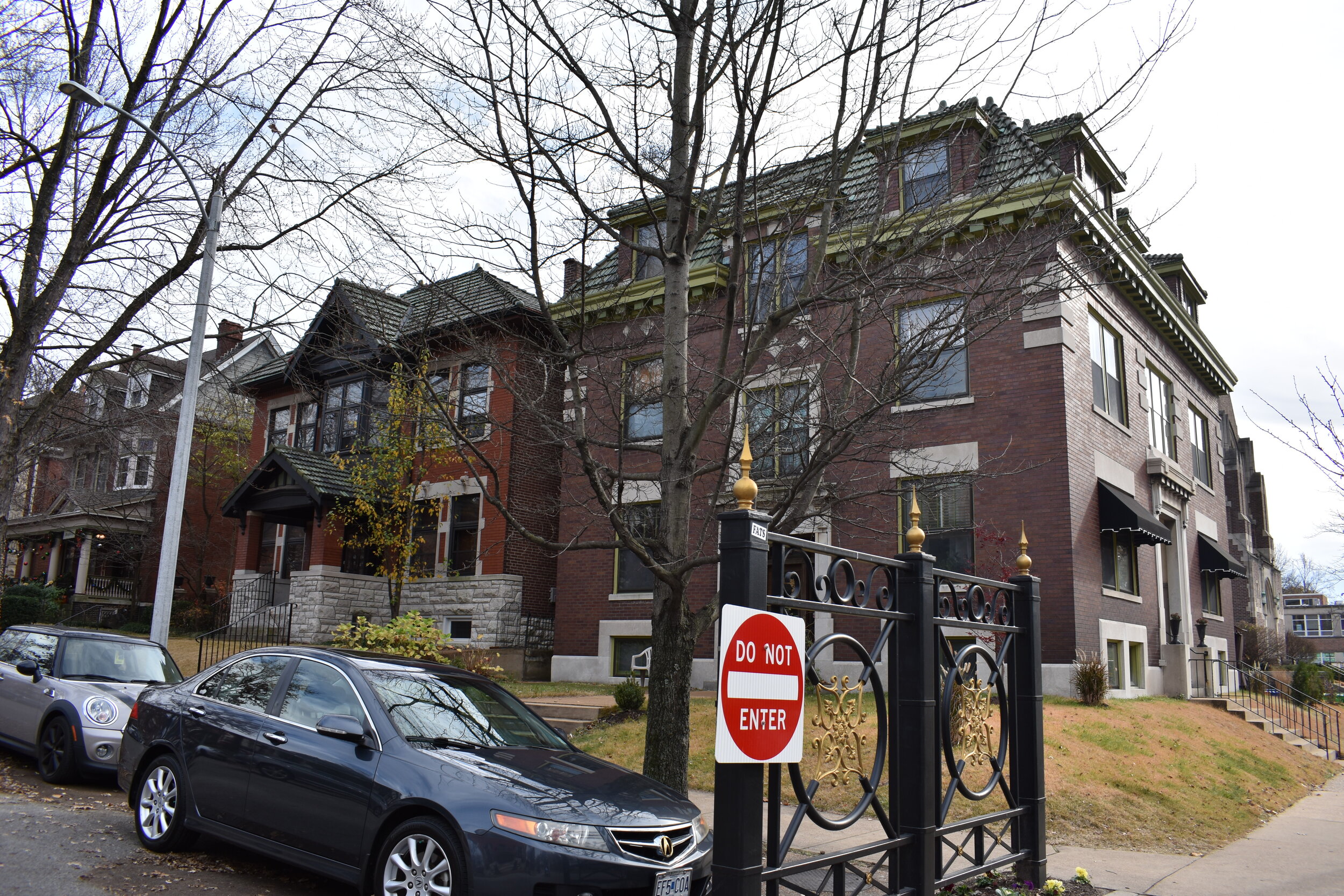
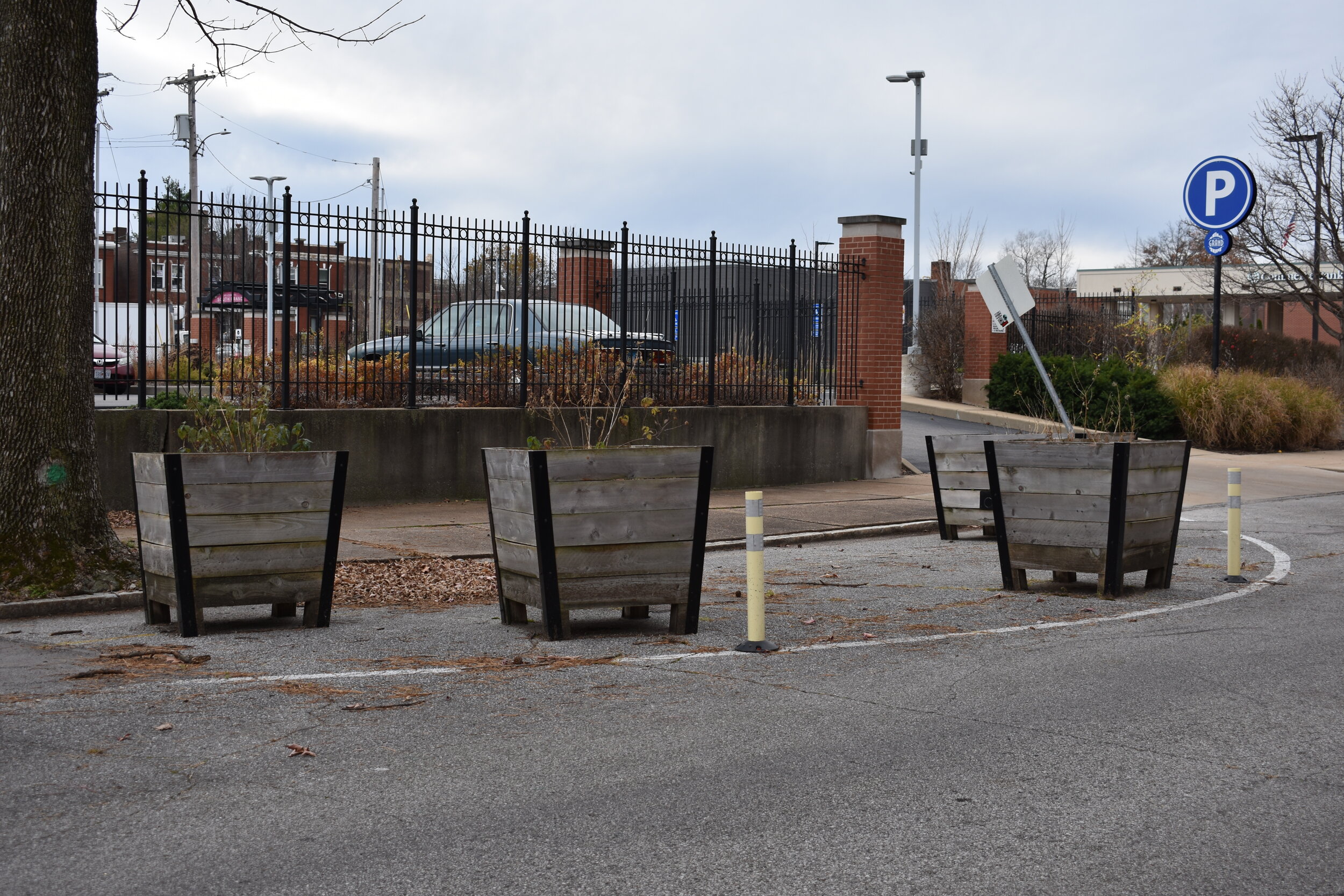
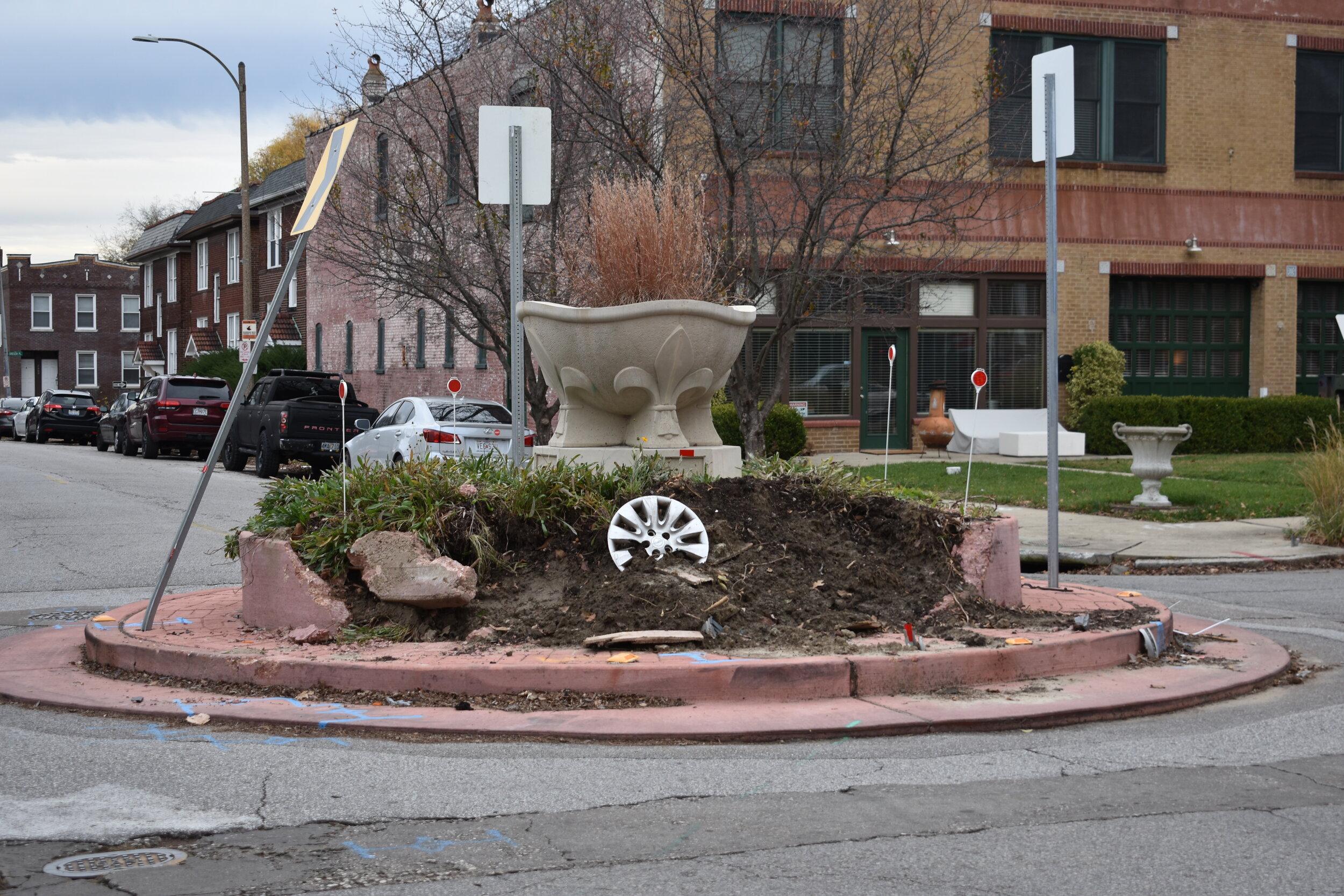
Street trees are needed, especially when Forestry is removing the elm/ash species due to disease/insect pests. But overall, there has been a noticeable uptick in tree plantings and sidewalk repairs, always welcomed in my book.
Investment wise, or CDC-wise, my money would be on uplifting the areas around Gravois, which could be ideal for more quality affordable housing as St. Louis is experiencing a near term housing price boom.
The area where the former Bavarian Inn and Tower Grove Provisions once held sway (miss em both badly) includes two gorgeous buildings I’d love to see occupied in the next decade.
South Grand is such a beautiful stretch of mixed uses from high-rise senior housing to churches to schools to retail, albeit the storefronts are a bit under-utilized. I did a decent job on the commercial strip around Arsenal and south to Utah in 2010, so no new pics there, but know it remains pretty solid and awesome.
So here are a bunch of photos that show the residential architecture of TGE in 2020. Brick city, baby!
Additional Tower Grove East Reading on St. Louis City Talk
Fox Park East Immigrant Housing Project - September, 2014
South Grand Named 1 of 15 “Great Places” by American Planning Association - October, 2017
Traffic Calming Efforts in South City - Prioritized People Over Cars - June, 2018

